FY 2020
CONGRESSIONAL BUDGET JUSTIFICATION
MINE SAFETY AND HEALTH ADMINISTRATION
This page is intentionally left blank.
MINE SAFETY AND HEALTH ADMINISTRATION
TABLE OF CONTENTS
Appropriation Language ..................................................................................................... 1
Amounts Available for Obligation...................................................................................... 2
Summary of Changes .......................................................................................................... 3
Summary Budget Authority and FTE by Activity .............................................................. 5
Budget Authority by Object Class ...................................................................................... 7
Authorizing Statutes............................................................................................................ 8
Appropriation History ......................................................................................................... 9
Overview ........................................................................................................................... 10
Organization Chart ............................................................................................................ 13
Budget Activities .............................................................................................................. 15
Mine Safety and Health Enforcement ........................................................................... 15
Coal Mine Safety and Health ........................................................................................ 23
Metal and NonMetal Mine Safety and Health .............................................................. 31
Office of Standards, Regulations, and Variances ......................................................... 39
Office of Assessments................................................................................................... 45
Educational Policy and Development ........................................................................... 51
Technical Support ......................................................................................................... 57
Program Evaluation and Information Resources .......................................................... 65
Program Administration................................................................................................ 71
This page is intentionally left blank.

MINE SAFETY AND HEALTH ADMINISTRATION
MSHA - 1
APPROPRIATION LANGUAGE
SALARIES AND EXPENSES
For necessary expenses for the Mine Safety and Health Administration, [$373,816,000]
$376,043,000, including purchase and bestowal of certificates and trophies in connection with mine
rescue and first-aid work, and the hire of passenger motor vehicles, including up to $2,000,000 for
mine rescue and recovery activities and not less than $10,537,000 for State assistance grants:
Provided, That amounts available for State assistance grants may be used for the purchase and
maintenance of new equipment required by the final rule entitled "Lowering Miners' Exposure to
Respirable Coal Mine Dust, Including Continuous Personal Dust Monitors" published by the
Department of Labor in the Federal Register on May 1, 2014 (79 Fed. Reg. 24813 et seq.), for
operators that demonstrate financial need as determined by the Secretary: Provided further, That
notwithstanding 31 U.S.C. 3302, not to exceed $750,000 may be collected by the National Mine
Health and Safety Academy for room, board, tuition, and the sale of training materials, otherwise
authorized by law to be collected, to be available for mine safety and health education and training
activities: Provided further, That notwithstanding 31 U.S.C. 3302, the Mine Safety and Health
Administration is authorized to collect and retain up to $2,499,000 from fees collected for the
approval and certification of equipment, materials, and explosives for use in mines, and may utilize
such sums for such activities: Provided further, That the Secretary is authorized to accept lands,
buildings, equipment, and other contributions from public and private sources and to prosecute
projects in cooperation with other agencies, Federal, State, or private: Provided further, That the Mine
Safety and Health Administration is authorized to promote health and safety education and training in
the mining community through cooperative programs with States, industry, and safety associations:
Provided further, That the Secretary is authorized to recognize the Joseph A. Holmes Safety
Association as a principal safety association and, notwithstanding any other provision of law, may
provide funds and, with or without reimbursement, personnel, including service of Mine Safety and
Health Administration officials as officers in local chapters or in the national organization: Provided
further, That any funds available to the Department of Labor may be used, with the approval of the
Secretary, to provide for the costs of mine rescue and survival operations in the event of a major
disaster. (Department of Labor Appropriations Act, 2019.)
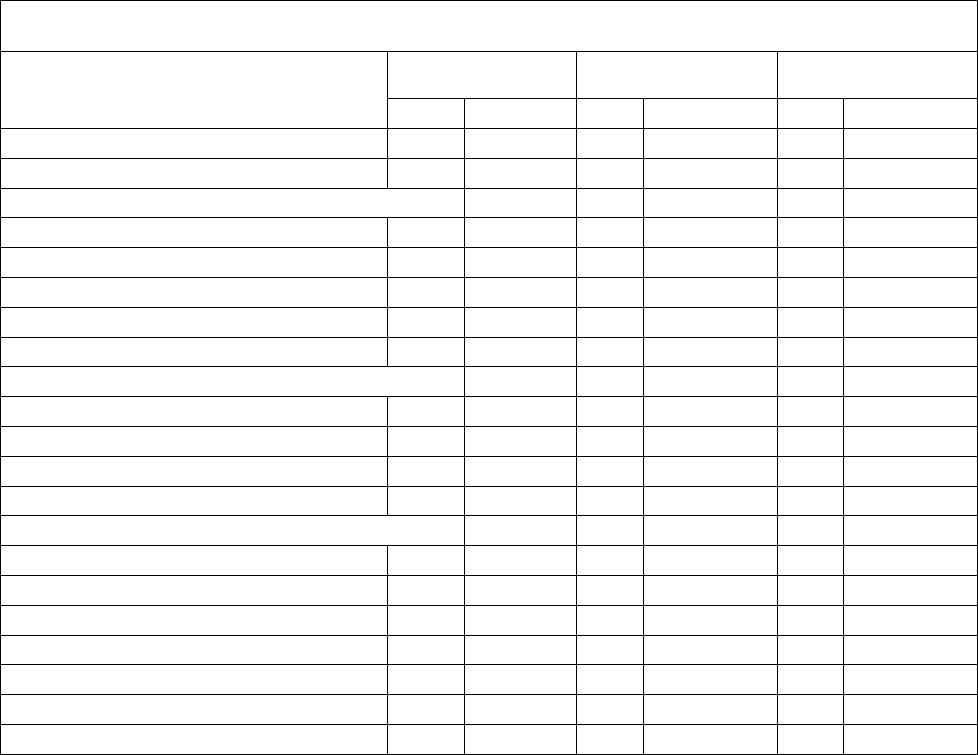
MINE SAFETY AND HEALTH ADMINISTRATION
MSHA - 2
AMOUNTS AVAILABLE FOR OBLIGATION
(Dollars in Thousands)
FY 2018
Enacted
FY 2019
Enacted
FY 2020
Request
FTE
Amount
FTE
Amount
FTE
Amount
A. Appropriation
2,053
$373,816
1,984
$373,816
1,984
$376,043
Offsetting Collections From:
Reimbursements
0
$3,249
0
$3,249
0
$3,249
Subtotal
2,053
$377,065
1,984
$377,065
1,984
$379,292
B. Gross Budget Authority
2,053 $377,065 1,984 $377,065 1,984 $379,292
IT Consolidation
0
$0
0
$0
0
$0
Offsetting Collections to:
Reimbursements
0
-$3,249
0
-$3,249
0
-$3,249
Subtotal
2,053
$373,816
1,984
$373,816
1,984
$376,043
C. Budget Authority Before Committee
2,053
$373,816
1,984
$373,816
1,984
$376,043
Offsetting Collections From:
Reimbursements
0
$1,409
0
$3,249
0
$3,249
Subtotal
2,053
$375,225
1,984
$377,065
1,984
$379,292
D. Total Budgetary Resources
2,053 $375,225 1,984 $377,065 1,984 $379,292
Unobligated Balance Expiring
-60
-$760
0
$0
0
$0
E. Total, Estimated Obligations
1,993
$374,465
1,984
$377,065
1,984
$379,292

MINE SAFETY AND HEALTH ADMINISTRATION
MSHA - 3
SUMMARY OF CHANGES
(Dollars in Thousands)
FY 2019
Enacted
FY 2020
Request
Net Change
Budget Authority
General Funds
$373,816
$376,043
+$2,227
Total
$373,816
$376,043
+$2,227
Full Time Equivalents
General Funds
1,984
1,984
0
Total
1,984
1,984
0
FY 2020 Change
Explanation of Change FY 2019 Base Trust Funds General Funds Total
FTE
Amount
FTE
Amount
FTE
Amount
FTE
Amount
Increases:
A. Built-Ins:
To Provide For:
Costs of pay adjustments
1,984
$178,082
0
$0
0
$0
0
$0
Personnel benefits
0
$63,568
0
$0
0
$0
0
$0
One day more of pay
0
$0
0
$0
0
$912
0
$912
Federal Employees' Compensation
Act (FECA)
0
$0
0
$0
0
$0
0
$0
Benefits for former personnel
0
$30
0
$0
0
$0
0
$0
Travel and transportation of persons
0
$10,399
0
$0
0
$0
0
$0
Transportation of things
0
$6,298
0
$0
0
$0
0
$0
Rental payments to GSA
0
$16,477
0
$0
0
$0
0
$0
Rental payments to others
0
$95
0
$0
0
$20
0
$20
Communications, utilities, and
miscellaneous charges
0
$2,691
0
$0
0
$0
0
$0
Printing and reproduction
0
$230
0
$0
0
$0
0
$0
Advisory and assistance services
0
$114
0
$0
0
$0
0
$0
Other services from non-Federal
sources
0
$5,017
0
$0
0
$0
0
$0
Working Capital Fund
0
$0
0
$0
0
$0
0
$0
Other Federal sources (DHS Charges)
0
$770
0
$0
0
$0
0
$0
Other goods and services from
Federal sources
0
$2,335
0
$0
0
$0
0
$0
Research & Development Contracts
0
$0
0
$0
0
$0
0
$0
Operation and maintenance of
facilities
0
$1,506
0
$0
0
$0
0
$0
Operation and maintenance of
equipment
0
$13,564
0
$0
0
$0
0
$0
Supplies and materials
0
$2,976
0
$0
0
$0
0
$0
Equipment
0
$2,951
0
$0
0
$0
0
$0
Grants, subsidies, and contributions
0
$10,787
0
$0
0
$0
0
$0
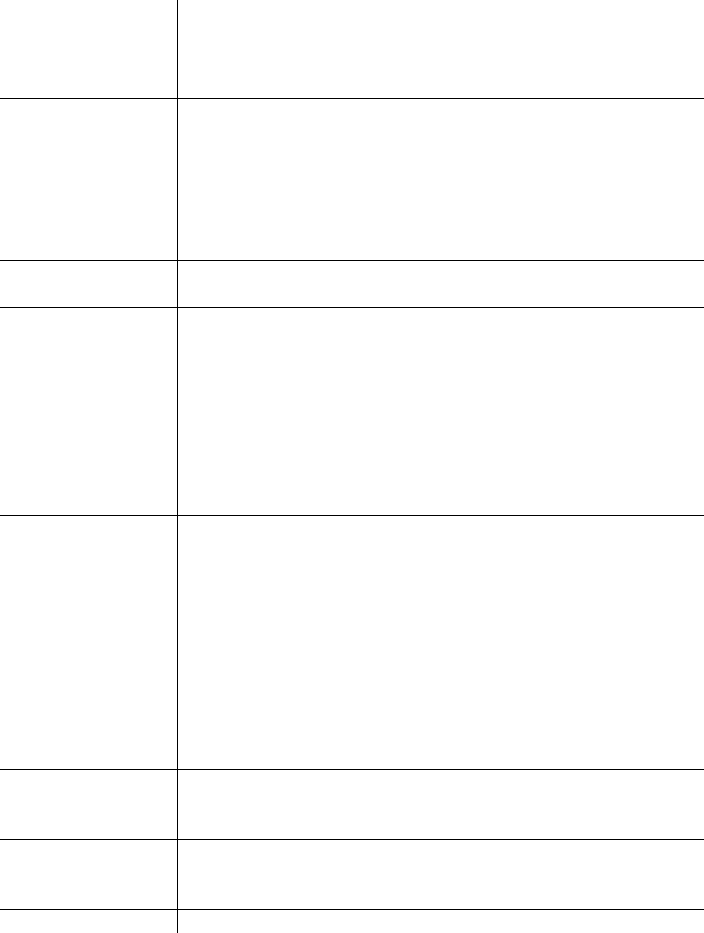
MINE SAFETY AND HEALTH ADMINISTRATION
MSHA - 4
FY 2020 Change
Explanation of Change FY 2019 Base Trust Funds General Funds Total
FTE
Amount
FTE
Amount
FTE
Amount
FTE
Amount
Insurance claims and indemnities
0
$38
0
$0
0
$0
0
$0
Land and Structures
0
$0
0
$0
0
$0
0
$0
Built-Ins Subtotal
1,984
+$317,928
0
$0
0
+$932
0
+$932
B. Programs:
Create Mine Safety and Health
Enforcement
0
$0
0
$0
1,450
$252,913
1,450
$252,913
WCF-Worker Protection IT
Modernization Efforts
52
$19,083
0
$0
0
$2,500
0
$2,500
Programs Subtotal
0
$0
1,450
+$255,413
1,450
+$255,413
Total Increase
1,984
+$317,928
0
$0
1,450
+$256,345
1,450
+$256,345
Decreases:
A. Built-Ins:
To Provide For:
Federal Employees' Compensation
Act (FECA)
0
$7,551
0
$0
0
-$32
0
-$32
Working Capital Fund
0
$48,337
0
$0
0
-$105
0
-$105
Built-Ins Subtotal
0
+$55,888
0
$0
0
-$137
0
-$137
B. Programs:
Merging the Coal Mine Safety and
Health Budget Activity
866
$156,704
0
$0
-866
-$156,704
-866
-$156,704
Merging the Metal and Nonmetal
Mine Safety and Health Budget
Activity
584
$96,209
0
$0
-584
-$96,209
-584
-$96,209
Reduction to Absorb One More Day
of Pay and Inflationary Costs
534
$120,903
0
$0
0
-$795
0
-$795
Reduction in Enforcement
0
$0
0
$0
0
-$273
0
-$273
Programs Subtotal
0
$0
-
1,450
-$253,981
-
1,450
-$253,981
Total Decrease
0
+$55,888
0
$0
-
1,450
-$254,118
-
1,450
-$254,118
Total Change
1,984
+$373,816
0
$0
0
+$2,227
0
+$2,227
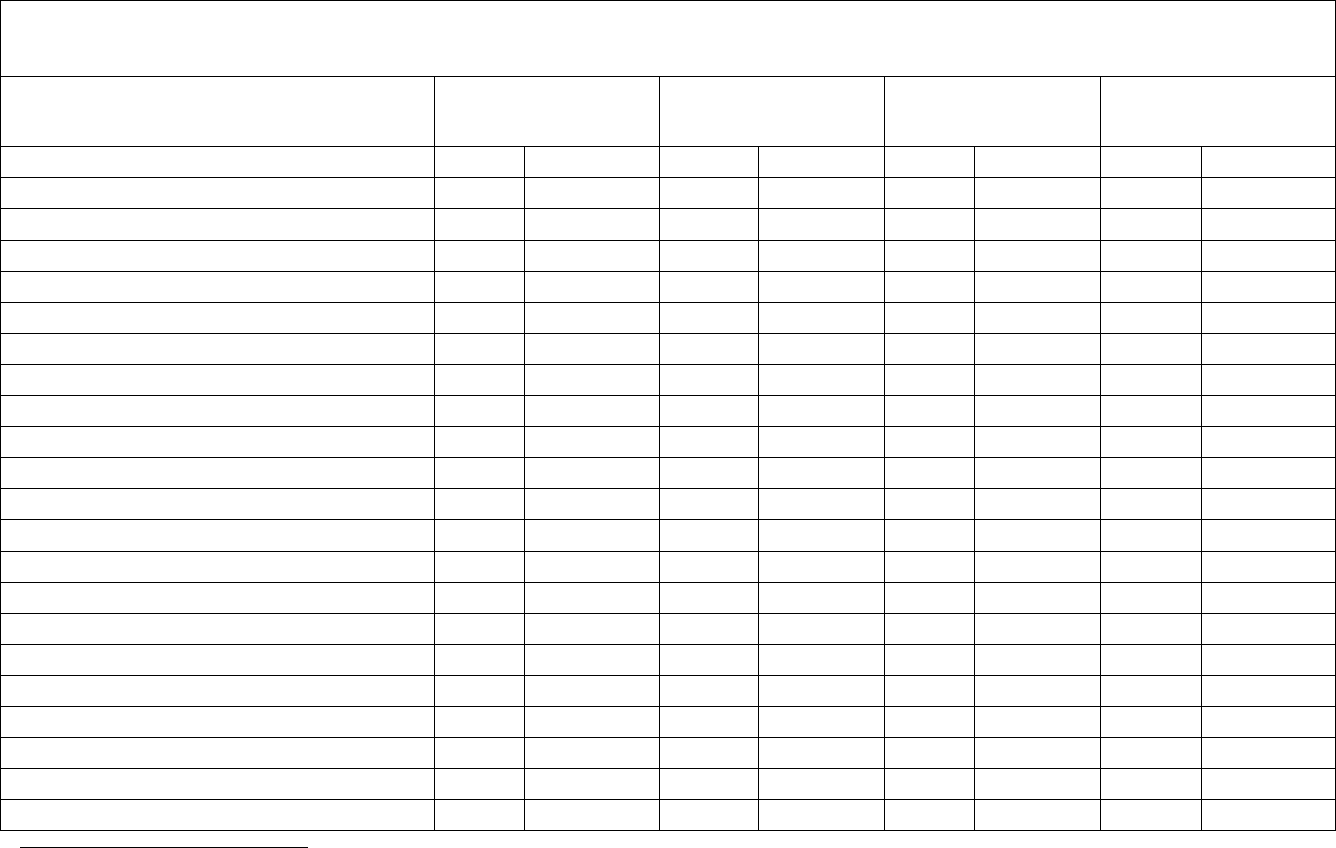
MINE SAFETY AND HEALTH ADMINISTRATION
MSHA - 5
SUMMARY BUDGET AUTHORITY AND FTE BY ACTIVITY
(Dollars in Thousands)
FY 2018
1
Enacted
FY 2019
2
Enacted
FY 2020
Request
Diff. FY20 Request /
FY19 Enacted
FTE
Amount
FTE
Amount
FTE
Amount
FTE
Amount
Mine Safety and Health Enforcement
0
0
0
0
1,450
252,640
1,450
252,640
General Funds
0
0
0
0
1,450
252,640
1,450
252,640
Coal Mine Safety and Health
905
156,704
866
156,704
0
0
-866
-156,704
General Funds
905
156,704
866
156,704
0
0
-866
-156,704
Metal and Nonmetal Mine Safety and Health
554
96,209
584
96,209
0
0
-584
-96,209
General Funds
554
96,209
584
96,209
0
0
-584
-96,209
Office of Standards, Regulations, and Variances
16
5,382
19
5,382
19
5,382
0
0
General Funds
16
5,382
19
5,382
19
5,382
0
0
Office of Assessments
49
7,445
49
7,445
49
7,445
0
0
General Funds
49
7,445
49
7,445
49
7,445
0
0
Technical Support
201
34,079
205
34,079
205
34,079
0
0
General Funds
201
34,079
205
34,079
205
34,079
0
0
Educational Policy and Development
127
38,559
122
38,559
122
38,559
0
0
General Funds
127
38,559
122
38,559
122
38,559
0
0
1
FY 2018 Budget Authority reflects a reprogramming as reported in the Department’s budget operating plan.
2
FY 2019 Budget Authority reflects a reprogramming as reported in the Department’s budget operating plan.

MINE SAFETY AND HEALTH ADMINISTRATION
MSHA - 6
SUMMARY BUDGET AUTHORITY AND FTE BY ACTIVITY
(Dollars in Thousands)
FY 2018
1
Enacted
FY 2019
2
Enacted
FY 2020
Request
Diff. FY20 Request /
FY19 Enacted
FTE
Amount
FTE
Amount
FTE
Amount
FTE
Amount
Program Evaluation and Information
Resources
51
19,083
52
19,083
52
21,583
0
2,500
General Funds
51
19,083
52
19,083
52
21,583
0
2,500
Program Administration
90
16,355
87
16,355
87
16,355
0
0
General Funds
90
16,355
87
16,355
87
16,355
0
0
Total
1,993
373,816
1,984
373,816
1,984
376,043
0
2,227
General Funds
1,993
373,816
1,984
373,816
1,984
376,043
0
2,227
NOTE: 2018 reflects actual FTE.

MINE SAFETY AND HEALTH ADMINISTRATION
MSHA - 7
BUDGET AUTHORITY BY OBJECT CLASS
(Dollars in Thousands)
FY 2018
Enacted
FY 2019
Enacted
FY 2020
Request
Diff. FY20
Request /
FY19
Enacted
Full-Time Equivalent
Full-time Permanent
2,010
1,983
1,983
0
Other
13
1
1
0
Total
2,023
1,984
1,984
0
Average ES Salary
$183,480
$186,838
$190,388
$3,550
Average GM/GS Grade
11/5
11/5
11/5
0
Average GM/GS Salary
$85,090
$86,647
$88,293
$1,646
Average Salary of Ungraded Positions
54,260
55,253
56,303
1,050
11.1
Full-time permanent
173,404
174,269
174,269
0
11.3
Other than full-time permanent
180
105
818
713
11.5
Other personnel compensation
3,709
3,708
3,708
0
11.8
Special personal services payments
0
0
0
0
11.9
Total personnel compensation
177,293
178,082
178,795
713
12.1
Civilian personnel benefits
70,804
71,119
71,315
196
13.0
Benefits for former personnel
23
30
1
-29
21.0
Travel and transportation of persons
10,760
10,399
9,734
-665
22.0
Transportation of things
6,288
6,298
6,088
-210
23.0
Rent, Communications, and Utilities
0
0
0
0
23.1
Rental payments to GSA
17,769
16,477
16,477
0
23.2
Rental payments to others
80
95
115
20
23.3
Communications, utilities, and
miscellaneous charges
2,647
2,691
2,691
0
24.0
Printing and reproduction
272
230
230
0
25.1
Advisory and assistance services
169
114
114
0
25.2
Other services from non-Federal sources
4,637
5,017
4,893
-124
25.3
Other goods and services from Federal
sources 1/
51,768
51,442
53,837
2,395
25.4
Operation and maintenance of facilities
1,213
1,506
1,506
0
25.5
Research and development contracts
0
0
0
0
25.7
Operation and maintenance of equipment
11,705
13,564
13,564
0
26.0
Supplies and materials
2,585
2,976
2,976
0
31.0
Equipment
4,903
2,951
2,882
-69
32.0
Land and Structures
0
0
0
0
41.0
Grants, subsidies, and contributions
10,787
10,787
10,787
0
42.0
Insurance claims and indemnities
113
38
38
0
Total
373,816
373,816
376,043
2,227
1/Other goods and services from Federal sources
Working Capital Fund
48,027
48,337
48,232
-105
DHS Services
925
770
770
0
HHS Services
1,600
1,465
1,465
0
Services by Other Government
Departments
1,216
870
870
0
MINE SAFETY AND HEALTH ADMINISTRATION
MSHA - 8
AUTHORIZING STATUTES
Public Law /
Act
Legislation
Statute No. /
US Code
Volume
No.
Page
No.
Expiration
Date
91-173
Federal Mine Safety and Health
Act of 1977, As Amended By
Public Law 95-164
30 U.S.C., 801 et.
seq.
30
823
None
109-236
Mine Improvement and New
Emergency Response Act of
2006 (MINER Act)
30 U.S.C., 801 et.
seq.
30
823
None
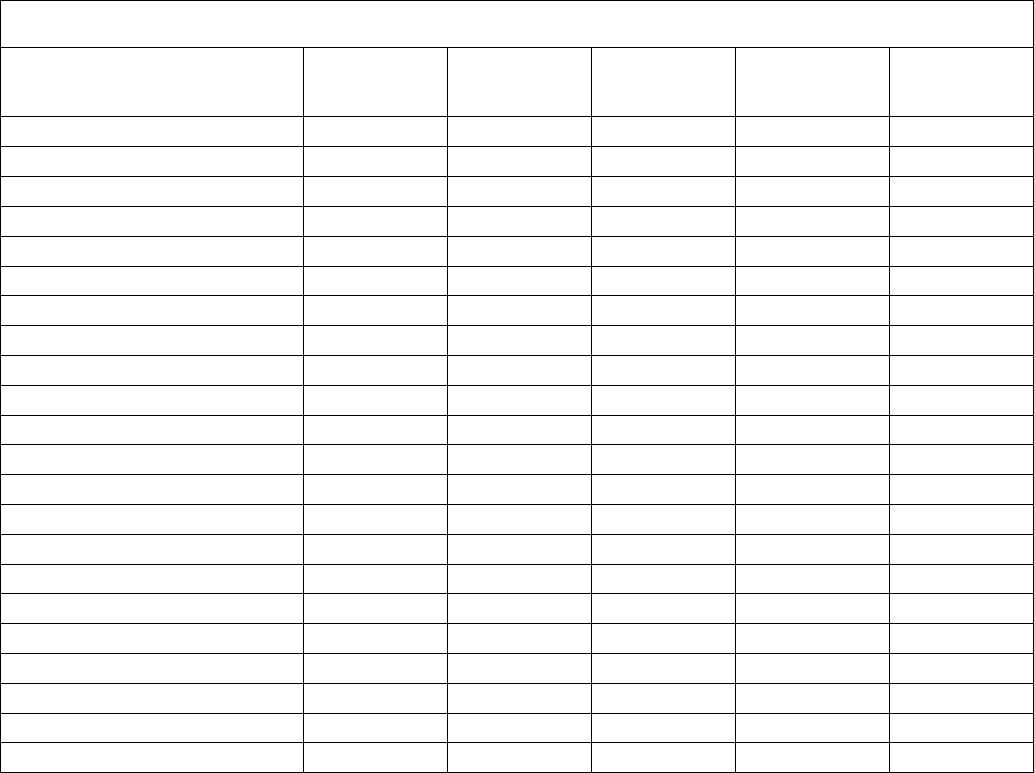
MINE SAFETY AND HEALTH ADMINISTRATION
MSHA - 9
APPROPRIATION HISTORY
(Dollars in Thousands)
Budget
Estimates to
Congress
House
Allowance
Senate
Allowance
Appropriations
FTE
2010
Base Appropriation...1/
$353,693
$353,193
$357,443
$357,293
2,425
2011
Base Appropriation...2/
$360,780
$377,000
$363,115
2,328
2012
Base Appropriation...3/
$384,277
$379,854
$384,277
$373,293
2,365
2013
Base Appropriation...4/
$371,896
$353,768
2,388
2014
Base Appropriation
$380,721
$375,887
2,366
2015
Base Appropriation
$377,234
$375,887
2,316
2016
Base Appropriation
$394,932
$371,000
$356,878
$375,887
2,271
2017
Base Appropriation
$397,372
$373,816
2,152
2018
Base Appropriation...5/
$375,172
$359,975
$373,816
2,023
2019
Base Appropriation...6/
$375,906
$373,816
$373,816
1,984
2020
Base Appropriation
$376,043
1,984
1/ Does not include $7,259 provided to MSHA for the Upper Big Branch mine investigation and the caseload
backlog at the Federal Mine Safety and Health Review Commission in the Supplemental Appropriations Act,
P.L. 111-212. This amount was transferred from the Departmental Management account via a nonexpenditure
transfer.
2/ This bill was only reported out of Subcommittee and was not passed by the Full House. Reflects a $2,000 transfer
to the Office of the Solicitor.
3/ Reflects a $707 reduction pursuant to P.L. 112-74, and a $770 transfer to the Office of the Solicitor.
4/ Reflects a 0.2% across the board rescission pursuant to P.L. 113-6 and the sequestration reduction pursuant to the
Balanced Budget and Emergency Deficit Control Act of 1985.
5/ A full-year 2018 appropriation for this account was not enacted at the time the budget was prepared.
6/ This bill was passed by the Senate. It was passed out of the House Subcommittee but was not reported out of the House
Committee or by the full House.

MINE SAFETY AND HEALTH ADMINISTRATION
MSHA - 10
OVERVIEW
Introduction
The Mine Safety and Health Administration (MSHA) works to prevent death, disease, and injury
from mining and promote safe and healthful workplaces for the nation’s miners. MSHA
enforces provisions of the Federal Mine Safety and Health Act of 1977 (Mine Act), as amended
by the Mine Improvement and New Emergency Response Act of 2006 (MINER Act).
More than 300,000 people work directly in the mining sector, including initial mining of raw
materials through processing in preparation for commercial distribution. This industry
provides essential materials for the nation's energy, power, transportation infrastructure,
construction and housing, communications, medicine, manufacturing, consumer goods, and
agricultural industries.
MSHA is committed to its mission and promotes safety and health through inspections and
enforcement, stakeholder outreach, compliance and technical assistance, education and
training, and improved safety and health standards. Effective approaches to reducing the risk
of injury and disease to miners include workplace examinations, hazard recognition and
elimination, and continual monitoring of the work environment to protect against new
hazards and to ensure compliance with safety and health standards. MSHA also protects the
rights of miners. The Mine Act gives miners the right to have a role in their safety and health
by participating in the inspection process through a representative of their choosing, speaking
out about hazards, refusing to work in dangerous conditions, and exercising other rights.
Since 2010, MSHA’s data indicate that work-related accidents at coal and metal and nonmetal
mines have declined, however, challenges remain. While the mining industry recorded the
lowest fatality rates in mining history in 2016, there was a small uptick in the number of fatalities
in 2017 and 2018. MSHA will utilize 2020 resources to reduce accidents, enforce safety and
health standards, provide compliance and technical assistance, and train miners and mine
operators on hazard recognition and elimination to decrease fatality and injury rates. Starting in
2018, MSHA focused its compliance and technical assistance efforts on reducing accidents
caused by powered haulage equipment, which continue to be a leading cause of mining fatalities.
MSHA continues to devote sufficient resources toward a competitive grant activity for effective
emergency response and recovery training in various types of mine conditions. MSHA will
measure the Agency performance of reducing the reportable injury rate associated with powered
haulage equipment by 10 percent per year. This performance goal is based on a rolling five-year
average per 200,000 hours worked. In FY 2018, the five-year rolling average of reportable
injuries was 0.19, the same as FY 2017.
Resources, Priorities, and Performance
In FY 2020, MSHA is requesting $376,043,000 and 1,984 FTE. This request builds on the FY
2019 Revised Enacted and reflects MSHA’s commitment to enforcement of the Mine Act and
providing compliance and technical assistance. MSHA’s budget includes discretionary program
changes listed below.
MINE SAFETY AND HEALTH ADMINISTRATION
MSHA - 11
• Program increases:
o $252,913,000 and 1,450 FTE to create the Mine Safety and Health Enforcement
budget activity by merging the Coal Mine Safety and Health budget activity with
the Metal and Nonmetal Mine Safety and Health budget activity. The new
enforcement structure will provide the flexibility to address industry changes, and
maximize the efficient use of MSHA’s resources.
o $2,500,000 for MSHA to support the Department’s Worker Protection Agencies’
IT Modernization efforts. In total, the Department is requesting $20,000,000 for
this initiative with resources requested in the following appropriations: Employee
Benefits Security Administration, Office of Workers’ Compensation Programs,
Office of Federal Contract Compliance Programs, Office of Labor-Management
Standards, Wage and Hour Division, Occupational Safety and Health
Administration, Mine Safety and Health Administration, and the Office of the
Solicitor in the Departmental Management appropriation. These resources will be
managed by OCIO on behalf of the worker protection agencies and OCIO will
work in collaboration with the worker protection agencies to determine the
specific funding requirements and where funding can best support the
Department’s IT modernization efforts.
• Program decreases:
o $156,704,000 and 866 FTE for merging the Coal Mine Safety and Health
budget activity to create the Mine Safety and Health Enforcement budget
activity.
o $96,209,000 and 584 FTE for merging the Metal and Nonmetal Mine Safety
and Health budget activity to create the Mine Safety and Health Enforcement
budget activity.
o $273,000 to reduce funding within the Mine Safety and Health Enforcement
budget activity to account for economies of scale.
MSHA’s enforcement program supports the following President’s Management Agenda key
drivers and goals:
• IT Modernization - Enhance mission effectiveness by improving the quality and
efficiency of critical citizen-facing services, including through the increased
utilization of cloud-based solutions such as email and collaboration tools.
• Shifting from Low-Value to High-Value Work – By merging MSHA’s two
enforcement programs under a single Administrator, the Agency is providing needed
flexibility to address changing industry trends and is minimizing cost, and increasing
effectiveness and productivity. This is achieved by eliminating duplicative tasks and
focusing resources to ensure the Agency meets statutory obligations and high priority
initiatives to ensure the safety and health of our nation’s miners.
• People: Workforce for the 21st Century – Under MSHA’s new enforcement structure,
the Agency will be able to more efficiently use its experienced personnel and align
their skills to address evolving mission needs. MSHA’s inspector training programs
MINE SAFETY AND HEALTH ADMINISTRATION
MSHA - 12
will be designed for a workforce that will inspect both coal and metal/nonmetal
underground and surface mines. Travel times between mining operations will
decrease, allowing for more onsite presence at mines.
MSHA will continue to meet the Agency’s statutory obligations under the Mine Act that include
completing its mandatory mine inspections -- four inspections per year in underground mines
and two inspections per year in surface mines, as well as enforcing mandatory health and safety
standards to protect the safety and health of the nation’s miners.
MSHA continues to identify ways to improve efficiency, effectiveness and accountability.
MSHA continues efforts to align the Agency’s organizational structure with its core mission and
operating plan, and focus on activities that will increase operational efficiency and provide
greater cost effectiveness. Additionally, MSHA continues to work with stakeholders to
strengthen collaborative relationships, to better understand the mining community’s needs, and
to develop guidance and outreach materials that will help to ensure miners’ safety and health.
MSHA will continue to evaluate the locations of mining activity and may assign mines to other
Districts to improve miners’ safety and health.
• MSHA recognizes the current trend in the coal industry and has taken actions to align
its resources accordingly. MSHA has closed three district offices and five field
offices since 2014. MSHA also plans to close the Jacksboro, Tennessee field office
location. Further, MSHA has shifted 75 employees from Coal Mine Safety and Health
to support Metal and Nonmetal Mine Safety and Health, Technical Support, and
Educational Policy and Development.
• MSHA anticipates that production will increase in several metal and nonmetal mining
sectors, particularly the aggregates, due to infrastructure revitalization, which would
require additional resources for enforcement, and compliance and technical
assistance. The Agency continues to monitor industry forecasts and will adjust
resources as necessary.
MSHA continues to work with the National Institute for Occupational Safety and Health
(NIOSH), industry, labor, and other stakeholders in the mining community to identify best
practices and new technologies that can improve miners’ safety and health. MSHA and NIOSH
will place particular focus collaborating on research priorities, so that research will be directed to
those issues that present the greatest hazards to miners’ safety and health. The MSHA/NIOSH
partnership continues to provide a forum for the exchange of scientific findings on the health
effects of diesel exhaust in underground mines. MSHA also has a number of industry alliances
through which it works to foster best practices and information sharing focused on health and
safety.
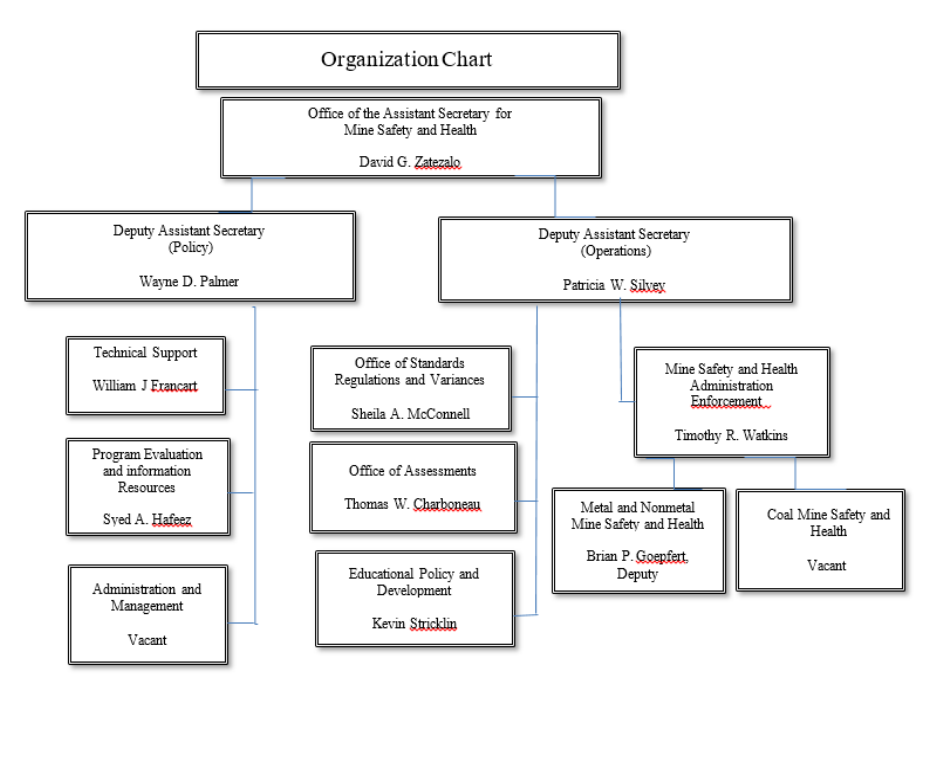
MINE SAFETY AND HEALTH ADMINISTRATION
MSHA - 13

MINE SAFETY AND HEALTH ENFORCEMENT
MSHA - 15
BUDGET AUTHORITY BEFORE THE COMMITTEE
(Dollars in Thousands)
FY 2018
Enacted
FY 2019
Enacted
FY 2020
Request
Diff. FY20
Request /
FY19
Enacted
Activity Appropriation
0
0
252,640
252,640
FTE
0
0
1,450
1,450
Introduction
Historically, MSHA's enforcement function has been bifurcated into Coal and Metal/Nonmetal
program areas, each with its own Administrator and culture. MSHA has already consolidated the
two programs into one unified reporting structure with one Administrator. MSHA will create a
single enforcement budget activity, Mine Safety and Health Enforcement (MSHE), by
combining the Coal Mine Safety and Health (CMSH) budget activity with the Metal and
Nonmetal Mine Safety and Health (MNMSH) budget activity. MSHA will continue to evaluate
the field and district enforcement structures to better align agency resources with current mining
activity and to better allocate resources to improve mine safety such as providing increased
compliance assistance to small mines. Historically, MSHA's enforcement function has been
bifurcated into Coal and Metal/Nonmetal program areas, each with its own Administrator and
culture. MSHA is executing a gradual phase in approach merger by 2
nd
quarter FY 2020. The
merger will consist of two program areas, while still accommodating situations unique to certain
types of mines. MSHA will create a single enforcement budget activity, Mine Safety and Health
Enforcement (MSHE), by combining the Coal Mine Safety and Health (CMSH) budget activity
with the Metal and Nonmetal Mine Safety and Health (MNMSH) budget activity.
• The Administrator for MSHE will be supported by two Deputy Administrators: one for
CMSH and one for MNMSH.
• The new enforcement structure of MSHE will provide the needed flexibility to address
industry changes. MSHA acknowledges the long-term trends in coal production,
particularly in the Appalachian region, and estimates that production in several metal and
nonmetal mining sectors will increase due to infrastructure revitalization.
• MSHE will be able to make efficient use of the Agency’s cadre of experienced personnel,
and will be better able to ensure consistent enforcement and compliance assistance.
• MSHE will consist of a small headquarters office located in Arlington, Virginia. MSHA
will review office locations with respect to mining operations to ensure that districts and
field offices are located in areas that maximize efficient use of MSHA’s resources. The
Agency may consolidate district offices and field offices beginning in FY 2020 or earlier.
MSHE will administer the provisions of the Mine Act, as amended by the MINER Act, to
promote compliance with safety and health standards, prevent fatalities, reduce the frequency
and severity of accidents, and minimize health hazards in the nation’s approximately 1,200 coal

MINE SAFETY AND HEALTH ENFORCEMENT
MSHA - 16
mines and 12,000 metal and nonmetal mines. MSHE inspects all active underground mines at
least four times per year and all surface mines twice per year. These inspections form the core of
MSHA’s efforts, regularly providing a first-hand look at conditions in each of the nation’s mines.
The majority of MSHE employees are located across 15 district offices and 89 field/satellite
offices throughout the United States and Puerto Rico. Most field employees are mine safety and
health enforcement personnel who perform inspection activities and investigations of fatal
accidents, non-fatal and non-injury accidents, verbal and written hazard complaints, and
discrimination complaints.
MSHE will continue efforts to improve workplace safety and health in the mining industry and
will remain committed to targeted enforcement and compliance assistance in its efforts to
improve safety and health conditions in the mining workplace by continuing the following
strategies:
• Enforcing mandatory health and safety standards through complete inspections of
each mine. MSHE will complete mandated inspections four times per year in
underground mines and twice per year in surface mines.
• Inspection and enforcement effectiveness. MSHE will enhance its enforcement efforts
of violations that contribute to fatalities and serious accidents through:
o Targeted inspections - MSHE will continue the Agency’s Targeted Inspections
initiative, as needed. These inspections target mines with specific conditions,
problems, or compliance issues.
o Promote adoption of prevention-focused, health and safety programs by
mine operators. MSHE will conduct health sampling activities to ensure that
miners’ overexposure to respirable dust, silica, and noise are addressed by mine
operators. Technical investigations, which evaluate the root causes of hazards
and accidents in mines, will be conducted. MSHE will also conduct accident
prevention inspections in response to specific mine hazards.
Protect miners from discrimination - MSHE will conduct timely investigations of
discrimination complaints and enhance miners’ knowledge regarding their rights and
responsibilities under the Mine Act.
FY 2020
In FY 2020, MSHA requests $252,640,000 and 1,450 FTE for MSHE. All program increases and
reductions are itemized below.
Program Change: $252,640,000 and 1,450 FTE to create the Mine Safety and Health
Enforcement (MSHE) budget activity by merging the Coal Mine Safety and Health (CMSH)
budget activity with the Metal and Nonmetal Mine Safety and Health (MNMSH) budget activity.
This includes a reduction $273,000 to account for economies of scale within the Mine Safety and
Health Enforcement budget activity. The reductions is attributable to travel.
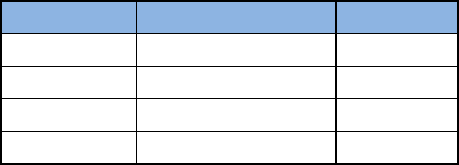
MINE SAFETY AND HEALTH ENFORCEMENT
MSHA - 17
Program
Total
FTE
CMSH
$156,704,000
866
MNMSH
$96,209,000
584
Decrease
($273,000)
Total
$252,640,000
1,450
Funding will support MSHA’s continued efforts to encourage the mining community to develop
and implement safety and health programs and to use an integrated approach toward the
prevention of serious accidents, injuries and occupational illnesses in the mining industry. In
FY 2020, MSHE will continue to ensure safe and healthful workplaces for the nation’s miners
through the following:
• Conduct all regular mandated inspections;
• Conduct targeted inspections;
• Provide compliance assistance;
• Conduct comprehensive health inspections;
• Conduct accident investigations (including root cause analyses);
• Perform accident prevention and outreach activities;
• Educate miners to enable them to exercise their rights and protections; and
• Conduct investigations of safety and discrimination complaints made by miners or their
representative.
MSHE projects that it will conduct approximately 20,200 mandated inspections. The actual
number of mandated inspections completed will depend on the number of operating mines.
MSHE will conduct other enhanced enforcement activities, such as targeted inspections. These
inspections target not only mines with a poor compliance history, but also those that have
adverse conditions such as increased methane liberation. The program will focus inspection
activity on improved impoundment safety by conducting inspections of all impoundments
classified as high-hazard potential.
MSHE will continue to enforce health standards to prevent occupational illnesses in the mining
industry. The elimination of black lung disease will continue to be a priority. MSHE will
continue to enforce the standards to reduce miners’ exposure to respirable coal mine dust; to
review the quality of coal mine dust controls in mine ventilation and dust control plans; and to
monitor operator sampling equipment in conjunction with regular inspections. MSHE will also
continue to share best practices for controlling exposures to respirable dust, quartz/silica and
noise.
MSHE will conduct compliance assistance activities to prevent fatalities, injuries, and
occupationally-related illnesses. These activities include assisting mine operators in solving
difficult health and safety problems, distributing training materials to mine operators, conducting
seminars, and speaking on mine health and safety in critical areas. MSHE will offer these
services especially to small mine operators, contractors, and miners who have not received
adequate training. It will continue to provide compliance assistance to new mine operators,

MINE SAFETY AND HEALTH ENFORCEMENT
MSHA - 18
which often employ less experienced miners and need additional initial assistance to establish
safe and healthful workplaces.
MSHE will continue to conduct accident and technical investigations, including root cause
analyses. These investigations will allow MSHE to analyze accidents to identify conditions and
practices that contribute to injuries and deaths such as safety standards violated, root causes, and
abatement practices. MSHE will also perform accident prevention and outreach activities such
as Winter Alert campaign, Spring Thaw workshops, the Preventive Roof/Rib Outreach Program,
and Powered Haulage Outreach.
MSHE will investigate hazard complaints and miner discrimination complaints in a timely
manner. MSHE will continue to educate miners on their rights under the Mine Act through its
outreach programs.
MSHE will continue to provide entry-level training programs for new inspectors, and retraining
every two years for journeyman inspectors. In addition, field office supervisors will attend a
two-week training program. All new supervisors will attend appropriate training as required by
DOL. MSHA will continue to utilize technology such as video teleconferencing and online
courses to provide some of the training as a cost-effective method of delivery.
MSHE will also begin to implement regular mine safety inspection efficiencies. Currently
MSHA conducts full inspections at mines that have entered into active non-producing status.
Mines are considered to be in active non-producing status when the work of all miners has been
terminated and production related activities has ceased. In FY 2020, MSHA will begin to reduce
inspection hours spent at mines in active non-producing status. MSHA estimates that
recalibrating to a lower level of inspection would achieve projected savings of 25 FTE while
maintaining the same level of safety and health. MSHA will recalibrate to a full inspection as a
mine enters and exits active non-producing status, with less than full but appropriate levels of
periodic inspections in the interim, to ensure safety for any miners who maintain such a mine.
FY 2019
See the CMSH and MNMSH budget activity narratives.
FY 2018
See the CMSH and MNMSH budget activity narratives.

MINE SAFETY AND HEALTH ENFORCEMENT
MSHA - 19
WORKLOAD AND PERFORMANCE SUMMARY
FY 2018
Enacted
FY 2019
Enacted
FY 2020
Request
Target
Result
Target
Target
Mine Safety and Health Enforcement
Strategic Goal 2 - Promote Safe Jobs and Fair Workplaces for All Americans
Strategic Objective MSHA 2.2 - Prevent fatalities, disease, and injury from mining, and secure safe and healthful working conditions for America's miners.
MSHA-
INSP1.1
Percent of regular mandated underground inspections
-- -- -- 100%
MSHA-
INSP2.1
Percent of regular mandated surface inspections
-- -- -- 100%
MSHA-01.1
Percent of 105(c) investigations of miner discrimination complaints that are completed
within 60 days of receipt -- -- -- 85%
MSHA-02.1
Percent of investigations of miner requests for temporary reinstatements that are
completed within 20 days of receipt -- -- -- 75%
MSHA-03.1
Number of 103(g) imminent danger complaint investigations initiated within 1 day of
receipt -- -- -- 100%
Legend:
(r) Revised
(e) Estimate
(base) Baseline
-- Not Applicable
TBD - To Be Determined
[p] - Projection
MINE SAFETY AND HEALTH ENFORCEMENT
MSHA - 20
MSHE will implement its enforcement strategies and initiatives through the following:
• MSHA-INSP1 and MSHA-INSP2: In FY 2020, MSHE projects it will complete 100
percent of its regular mandated inspections. These inspections provide an examination of
mining conditions and play a key role in assuring the safety and health of the nation's
miners. The actual number of surface and underground inspections completed will
depend on the number of active mines for each year. The projected number of
underground and surface mandated inspections in FY 2020 is 20,200. MSHE will
conduct targeted inspections at mines with poor compliance history or that have adverse
conditions such as increased methane liberation. MSHE will inspect all existing high-
hazard potential impoundments during regular mandated inspections in order to reduce
the risk to miners, the general public, and the environment should these impoundments
fail.
The Mine Act gives miners the right to participate in their safety and health by participating in
the inspection process through a representative of their choosing, speaking out about hazards,
refusing to work in dangerous conditions, and exercising other rights. MSHE will continue to
ensure that all miner requests for temporary reinstatements, investigations of 105(c) miner
discrimination complaints, and 103(g) imminent danger complaints are investigated within the
established timeframes. Prompt investigation of discrimination complaints and reported
hazardous conditions is of utmost importance in assuring miners that MSHA will protect their
rights through the following efforts in FY 2020:
• MSHA-01: Complete 85 percent of 105(c) investigations of miner discrimination
complaints within 60 days of receipt of a complaint.
•
MSHA-02: Complete 85 percent of investigations of miner requests for temporary
reinstatement within 20 days of receipt.
• MSHA-03: Initiate 100 percent of 103(g) imminent danger complaint investigations
within one day of receipt.

MINE SAFETY AND HEALTH ENFORCEMENT
MSHA - 21
BUDGET ACTIVITY BY OBJECT CLASS
(Dollars in Thousands)
FY 2018
Enacted
FY 2019
Enacted
FY 2020
Request
Diff. FY20
Request /
FY19
Enacted
11.1
Full-time permanent
0
0
123,330
123,330
11.3
Other than full-time permanent
0
0
522
522
11.5
Other personnel compensation
0
0
2,759
2,759
11.9
Total personnel compensation
0
0
126,611
126,611
12.1
Civilian personnel benefits
0
0
53,360
53,360
13.0
Benefits for former personnel
0
0
0
0
21.0
Travel and transportation of persons
0
0
8,714
8,714
22.0
Transportation of things
0
0
5,561
5,561
23.1
Rental payments to GSA
0
0
13,833
13,833
23.2
Rental payments to others
0
0
36
36
23.3
Communications, utilities, and miscellaneous
charges
0
0
840
840
24.0
Printing and reproduction
0
0
36
36
25.1
Advisory and assistance services
0
0
14
14
25.2
Other services from non-Federal sources
0
0
356
356
25.3
Other goods and services from Federal sources 1/
0
0
35,798
35,798
25.4
Operation and maintenance of facilities
0
0
8
8
25.7
Operation and maintenance of equipment
0
0
3,540
3,540
26.0
Supplies and materials
0
0
1,903
1,903
31.0
Equipment
0
0
2,027
2,027
42.0
Insurance claims and indemnities
0
0
3
3
Total
0
0
252,640
252,640
1/Other goods and services from Federal sources
Working Capital Fund
0
0
33,885
33,885
DHS Services
0
0
636
636
HHS Services
0
0
610
610
Services by Other Government Departments
0
0
667
667
MINE SAFETY AND HEALTH ENFORCEMENT
MSHA - 22
CHANGES IN FY 2020
(Dollars in Thousands)
Activity Changes
Built-In
To Provide For:
Costs of pay adjustments
$0
Personnel benefits
0
One day more of pay
657
Federal Employees' Compensation Act (FECA)
-25
Benefits for former personnel
0
Travel and transportation of persons
0
Transportation of things
0
Rental payments to GSA
0
Rental payments to others
6
Communications, utilities, and miscellaneous charges
0
Printing and reproduction
0
Advisory and assistance services
0
Other services from non-Federal sources
0
Working Capital Fund
-76
Other Federal sources (DHS Charges)
0
Other goods and services from Federal sources
0
Operation and maintenance of facilities
0
Operation and maintenance of equipment
0
Supplies and materials
0
Equipment
0
Insurance claims and indemnities
0
Built-Ins Subtotal
$562
Net Program
$252,078
Direct FTE
1,450
Estimate
FTE
Base
$562
0
Program Increase
$252,913
1,450
Program Decrease
-$835
0

COAL MINE SAFETY AND HEALTH
MSHA - 23
BUDGET AUTHORITY BEFORE THE COMMITTEE
(Dollars in Thousands)
FY 2018
Enacted
FY 2019
Enacted
FY 2020
Request
Diff. FY20
Request /
FY19
Enacted
Activity Appropriation
156,704
156,704
0
-156,704
FTE
905
866
0
-866
NOTE: FY 2018 reflects actual FTE. Authorized FTE for FY 2018 was 933.
Introduction
Coal Mine Safety and Health (CMSH) administers the provisions of the Mine Act, as amended
by the MINER Act, promotes compliance with safety and health standards to prevent fatalities,
reduces the frequency and severity of accidents, and minimizes health hazards in the nation’s
approximately 1,200 coal mines. CMSH inspects all active underground mines at least four
times per year and all surface mines twice per year. These inspections form the core of MSHA’s
enforcement, regularly providing a first-hand look at conditions in each of the nation’s mines.
Most of the CMSH employees are located across 9 district offices and 37 field offices throughout
the United States. The majority of field employees are mine safety and health enforcement
personnel who perform inspection activities and investigations, including investigations of fatal
accidents, non-fatal and non-injury accidents, verbal and written hazard complaints, and
discrimination complaints.
CMSH will continue efforts to improve workplace safety and health in the mining industry by
continuing the following strategies:
• Enforcing mandatory safety and health standards. CMSH will complete mandated
inspections four times per year in underground coal mines and twice per year at surface
coal mines.
• Inspection and enforcement effectiveness. CMSH will continue to enhance its
enforcement efforts of violations that contribute to fatalities and serious accidents
through:
o Targeted inspections - CMSH will continue the Agency’s Targeted Inspections
initiative on an as needed basis. These inspections target mines with specific
conditions, problems, or compliance issues.
o Promote adoption of prevention-focused, health and safety programs by
mine operators. CMSH will continue its health sampling activities to ensure that
miners’ overexposure to respirable dust, silica, and noise are addressed by mine
operators. Compliance assistance initiatives will focus on identified issues.
Technical investigations, which evaluate the root causes of hazards and accidents
in mines, will be conducted. CMSH will also conduct accident prevention
inspections in response to specific mine hazards.

COAL MINE SAFETY AND HEALTH
MSHA - 24
o Reduce Powered Haulage Accidents. CMSH will continue the Agency’s
initiative to reduce accidents associated with powered haulage equipment using a
collaborative approach involving MSHA program areas and mine safety
stakeholders.
• Protect miners from discrimination - CMSH will conduct timely investigations of
discrimination complaints and enhance miners’ knowledge regarding their rights and
responsibilities under the Mine Act. During outreach efforts, it will distribute educational
materials to ensure that miners are aware of their rights and responsibilities under the
Mine Act, without fear of retaliation.
Five-Year Budget Activity History
Fiscal Year
Funding
(Dollars in Thousands)
FTE
2015
$167,859
1,151
2016
$167,859
1,099
2017
$160,000
995
2018
$156,704
933
2019
$160,000
887
FY 2020
In FY 2020, MSHA will create a single enforcement budget activity (Mine Safety and Health
Enforcement) by merging CMSH and the MNMSH.
FY 2019
CMSH will continue an integrated approach toward the prevention of serious accidents, injuries
and occupational illnesses in the coal mining industry. CMSH will continue to ensure safe and
healthful workplaces for the nation’s miners through the following:
• Conduct all regular mandated inspections;
• Enforce respirable dust standards;
• Conduct targeted inspections;
• Perform accident prevention and outreach activities including various aspects of powered
haulage;
• Perform accident investigations (including root cause analyses);
• Conduct special initiatives to address particular issues;
• Conduct investigations of safety and discrimination complaints made by miners or their
representatives.
CMSH estimates that it will conduct approximately 3,150 mandated inspections, but this number
may vary depending on the number of operating mines. CMSH will conduct other enhanced
enforcement activities, such as targeted inspections. These inspections target not only mines
with a poor compliance history, but also those that have adverse conditions such as increased

COAL MINE SAFETY AND HEALTH
MSHA - 25
methane liberation and miners’ overexposures to silica. The program will focus inspection
activity on improved impoundment safety by conducting inspections of all impoundments
classified as high-hazard potential. CMSH will also focus its efforts on mine operators that fail
to meet dust and noise standards.
CMSH will continue to enforce health standards to reduce miners’ exposure to respirable coal
mine dust. The standard reduces the allowable amount of respirable dust to which a miner can
be exposed as well as increases the frequency of dust sampling and requires coal operators to
take immediate action when dust levels exceed the standard. MSHA will continue to update and
share best practices for controlling exposures to respirable dust, quartz/silica, and noise.
CMSH will continue to conduct accident and technical investigations, including root cause
analyses. These investigations will allow CMSH to analyze accidents to identify conditions and
practices that contribute to injuries and deaths such as safety standards violated, root causes, and
abatement practices. CMSH will also perform accident prevention and outreach activities such
as Winter Alert campaign and the Preventive Roof/Rib Outreach Program.
CMSH will investigate hazard complaints and miner discrimination complaints in a timely
manner. CMSH will continue to educate miners on their rights under the Mine Act through its
outreach programs. CMSH will also continue to encourage miners to report hazards through the
use of the MSHA.gov website, MSHA's National Hazard Reporting Page, and the 1-800 “One
Call Does It All” phone number. This is critical in reducing safety and health risks. CMSH will
continue to encourage an industry-wide culture in which mine operators take ownership of health
and safety through effective prevention-oriented health and safety management programs;
conduct thorough inspections and robust enforcement; promote stakeholder outreach, education,
and training; and propose improved regulations.
CMSH and MNMSH will begin to merge program functions and train all relevant personnel.
Classroom and on-the-job training will be provided to inspectors and management personnel.
The FY 2019 journeyman retraining will focus on the “crossover” training.
FY 2018
In FY 2018, CMSH completed 100 percent of its regular mandated underground and surface
inspections. It also conducted 53 targeted inspections resulting in 524 citations, 10 orders, and 2
safeguards, for a total of 536 issuances and a Significant and Substantial rate of 23 percent.
These inspections targeted not only mines with compliance issues, but also hazards pertaining to
the transportation of miners and materials in underground coal mines, and specific areas of
concern such as increased methane liberation, rock dust sampling, belt conveyors, and roof
control.
CMSH continued to reallocate resources from areas in which trends indicated a shift in mining.
This reallocation was accomplished through attrition, personnel transfers, and district office
closures. In FY 2018, CMSH finalized the closure of District 11 in Birmingham, AL, and
initiated plans to close the McHenry, MD field office in District 3 by FY 2020.
COAL MINE SAFETY AND HEALTH
MSHA - 26
CMSH conducted special emphasis respirable coal mine dust inspections as needed. CMSH
continued to enforce the standards and inspection requirements established in the Respirable
Dust Rule.
CMSH continued to conduct accident investigations, including root cause analyses. These
investigations allowed CMSH to analyze fatal accidents to identify conditions and practices that
contributed to injuries and deaths. CMSH also performed accident prevention and outreach
activities.
CMSH investigated 795 miner hazard complaints with 315 positive findings in a timely manner.
CMSH received 45 complaints of discrimination complaints. Of these cases, 19 complainants
requested temporary reinstatement. The Secretary filed eleven applications for temporary
reinstatement of discharged miners.
MSHA announced that it would be gradually merging CMSH and MNMSH into one
enforcement program. Preparation began by selecting mines and training inspectors to conduct
the initial crossover inspections. Implementation started October 1, 2018, and selected
approximately 90 primarily small, less complex metal and nonmetal mines to be inspected by
CMSH inspectors and five coal mines to be inspected by MNMSH Inspectors.
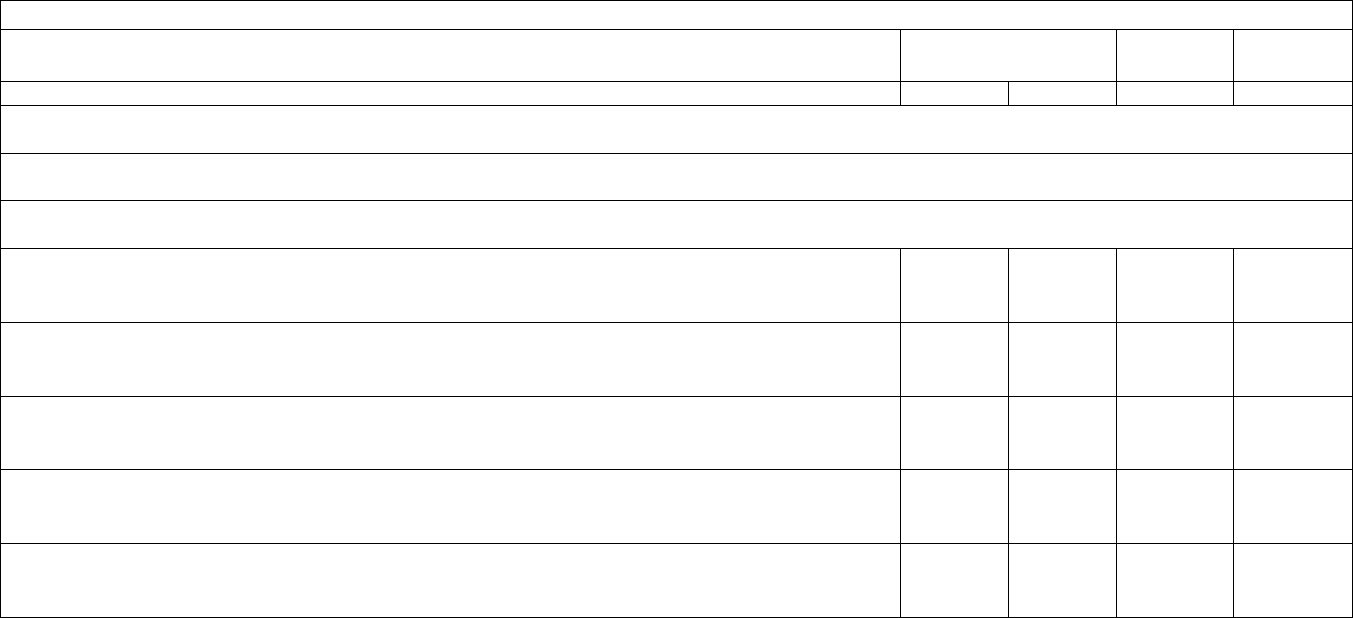
COAL MINE SAFETY AND HEALTH
MSHA - 27
WORKLOAD AND PERFORMANCE SUMMARY
FY 2018
Enacted
FY 2019
Enacted
FY 2020
Request
Target
Result
Target
Target
Coal Mine Safety and Health
Strategic Goal 2 - Promote Safe Jobs and Fair Workplaces for All Americans
Strategic Objective MSHA 2.2 - Prevent fatalities, disease, and injury from mining, and secure safe and healthful working conditions for America's miners.
MSHA-01
Percent of 105(c) investigations of miner discrimination complaints that are completed
within 60 days of receipt 85% 94% 85% --
MSHA-CM-
01.1
Number of regular mandated coal underground inspections
1,200 1,216 1,200 --
MSHA-CM-
01.2
Number of regular mandated coal surface inspections
2,000 1,964 1,950 --
MSHA-02
Percent of investigations of miner requests for temporary reinstatements that are
completed within 20 days of receipt 75% 90% 75% --
MSHA-03
Number of 103(g) imminent danger complaint investigations initiated within 1 day of
receipt 100% 100% 100% --
Legend:
(r) Revised
(e) Estimate
(base) Baseline
-- Not Applicable
TBD - To Be Determined
[p] - Projection
COAL MINE SAFETY AND HEALTH
MSHA - 28
CMSH will continue enforcement strategies and initiatives through the following:
• MSHA-INSP1and MSHA-INSP2: CMSH projects it will complete 100 percent of its
regular mandated inspections. The actual number of surface and underground inspections
completed will depend on the number of active coal mines for each year. CMSH will
conduct targeted inspections at mines with a poor compliance history or that have adverse
conditions.
The Mine Act gives miners the right to have a role in their safety and health by participating in
the inspection process through a representative of their choosing, speaking out about hazards,
refusing to work to work in dangerous conditions, and exercising other rights. These efforts
support workers’ rights through the following in FY 2019:
• MSHA-01: Complete 85 percent of 105(c) investigations of miner discrimination
complaints within 60 days of receipt of a complaint.
• MSHA-02: Complete 85 percent of investigations of miner requests for temporary
reinstatement within 20 days of receipt.
• MSHA-03: Initiate 100 percent of 103(g) imminent danger complaint investigations
within one day of receipt.
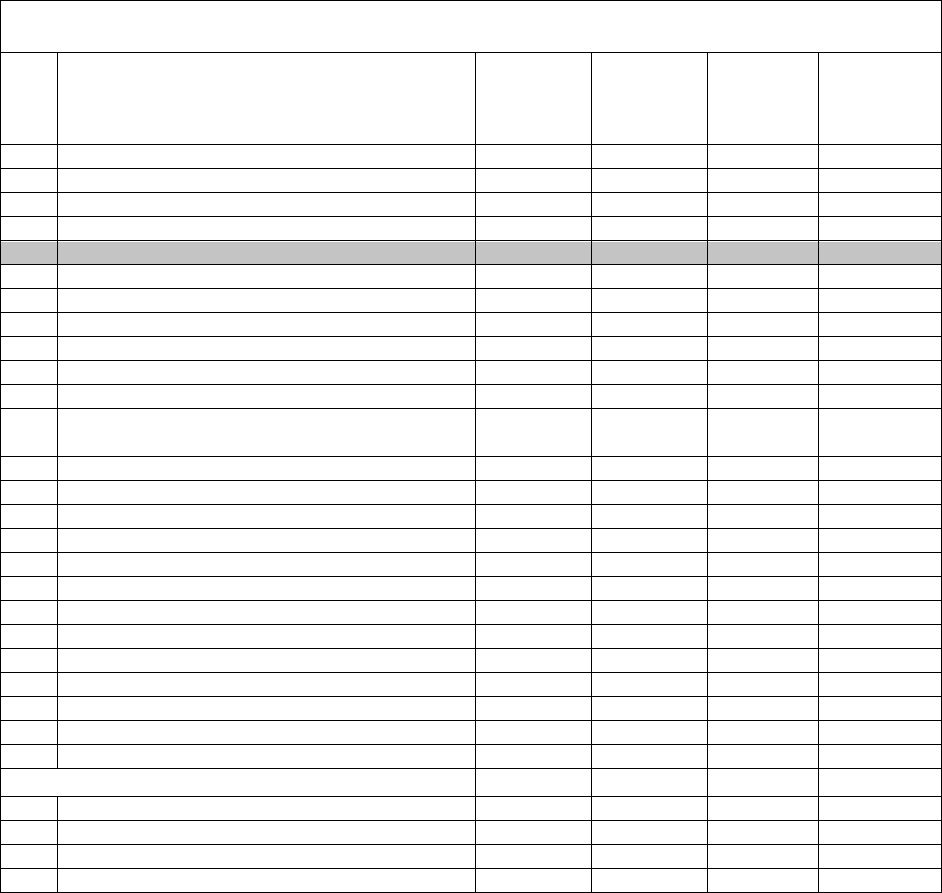
COAL MINE SAFETY AND HEALTH
MSHA - 29
BUDGET ACTIVITY BY OBJECT CLASS
(Dollars in Thousands)
FY 2018
Enacted
FY 2019
Enacted
FY 2020
Request
Diff. FY20
Request /
FY19
Enacted
11.1
Full-time permanent
74,660
72,914
0
-72,914
11.3
Other than full-time permanent
5
0
0
0
11.5
Other personnel compensation
1,773
1,715
0
-1,715
11.8
Special personal services payments
0
0
0
0
11.9
Total personnel compensation
76,438
74,629
0
-74,629
12.1
Civilian personnel benefits
33,915
33,160
0
-33,160
13.0
Benefits for former personnel
8
29
0
-29
21.0
Travel and transportation of persons
1,654
1,586
0
-1,586
22.0
Transportation of things
2,827
2,942
0
-2,942
23.1
Rental payments to GSA
9,315
8,648
0
-8,648
23.2
Rental payments to others
40
20
0
-20
23.3
Communications, utilities, and miscellaneous
charges
361
354
0
-354
24.0
Printing and reproduction
61
23
0
-23
25.1
Advisory and assistance services
16
10
0
-10
25.2
Other services from non-Federal sources
288
188
0
-188
25.3
Other goods and services from Federal sources 1/
28,591
31,286
0
-31,286
25.4
Operation and maintenance of facilities
12
8
0
-8
25.5
Research and development contracts
0
0
0
0
25.7
Operation and maintenance of equipment
510
2,214
0
-2,214
26.0
Supplies and materials
678
745
0
-745
31.0
Equipment
1,877
861
0
-861
41.0
Grants, subsidies, and contributions
0
0
0
0
42.0
Insurance claims and indemnities
113
1
0
-1
Total
156,704
156,704
0
-156,704
1/Other goods and services from Federal sources
Working Capital Fund
26,988
30,114
0
-30,114
DHS Services
479
397
0
-397
HHS Services
495
378
0
-378
Services by Other Government Departments
629
397
0
-397
COAL MINE SAFETY AND HEALTH
MSHA - 30
CHANGES IN FY 2020
(Dollars in Thousands)
Activity Changes
Built-In
To Provide For:
Costs of pay adjustments
$0
Personnel benefits
0
One day more of pay
0
Federal Employees' Compensation Act (FECA)
0
Benefits for former personnel
0
Travel and transportation of persons
0
Transportation of things
0
Rental payments to GSA
0
Rental payments to others
0
Communications, utilities, and miscellaneous charges
0
Printing and reproduction
0
Advisory and assistance services
0
Other services from non-Federal sources
0
Working Capital Fund
0
Other Federal sources (DHS Charges)
0
Other goods and services from Federal sources
0
Research & Development Contracts
0
Operation and maintenance of facilities
0
Operation and maintenance of equipment
0
Supplies and materials
0
Equipment
0
Grants, subsidies, and contributions
0
Insurance claims and indemnities
0
Built-Ins Subtotal
$0
Net Program
-$156,704
Direct FTE
-866
Estimate
FTE
Base
$156,704
866
Program Increase
$0
0
Program Decrease
-$156,704
-866

METAL AND NONMETAL MINE SAFETY AND HEALTH
MSHA - 31
BUDGET AUTHORITY BEFORE THE COMMITTEE
(Dollars in Thousands)
FY 2018
Enacted
FY 2019
Enacted
FY 2020
Request
Diff. FY20
Request /
FY19
Enacted
Activity Appropriation
96,209
96,209
0
-96,209
FTE
554
584
0
-584
NOTE: FY 2018 reflects actual FTE. Authorized FTE for FY 2018 was 558.
Introduction
Metal and Nonmetal Mine Safety and Health (MNMSH) administers the Mine Act as amended
by the MINER Act, and promotes compliance with safety and health standards to prevent
fatalities, reduce the frequency and severity of accidents, and minimize health hazards in the
nation’s approximately 12,000 metal and nonmetal mines. MNMSH inspects all active
underground mines at least four times per year and surface mines twice per year. These
inspections form the core of MSHA’s enforcement, regularly providing a first-hand look at
conditions in each of the nation’s mines.
Most of the MNMSH employees are located across six district offices and 52 field/satellite
offices throughout the United States and Puerto Rico. The majority of field employees are mine
safety and health professionals who perform inspection activities and investigations, including
investigations of fatal accidents, non-fatal and/or non-injury accidents, verbal and written hazard
complaints, and discrimination complaints.
MNMSH remains committed to targeted enforcement and compliance assistance and will
continue to improve safety and health conditions in the mining workplace through the following
strategies:
• Enforcing mandatory safety and health standards. MNMSH will continue to conduct
mandated inspections twice per year in metal and nonmetal surface mines and four times
per year in underground mines.
• Increase inspection and enforcement effectiveness - MNMSH will continue to enhance
enforcement efforts for violations of the standards associated with fatalities and serious
accidents, with emphasis on powered haulage accidents. MNMSH will continue its focus
on improving dam safety by continuing inspection activity at dams classified as high-
hazard potential.
o Targeted inspections - MNMSH will continue to conduct targeted inspections.
The actual number of inspections will depend on how many mines need additional
inspections. MNMSH will not conduct inspections in order to meet a specific
number.
o MNMSH Health Program - MNMSH will continue to conduct health
inspections at mines. It will place emphasis on mine operators’ responsibility for

METAL AND NONMETAL MINE SAFETY AND HEALTH
MSHA - 32
conducting required health surveys to determine adequate control measures and
explore additional innovative initiatives to effectively address the health program.
o Reduce Powered Haulage Accidents. MNMSH will continue the Agency’s
initiative to reduce accidents associated with powered haulage equipment using a
collaborative approach involving MSHA program areas and mine safety
stakeholders.
Protect miners from discrimination - MNMSH will continue to ensure that all miners’
discrimination complaints are investigated within established timeframes. During outreach
efforts, it will distribute educational materials to ensure that miners are aware of their rights and
responsibilities under the Mine Act, without fear of retaliation.
Five-Year Budget Activity History
Fiscal Year
Funding
(Dollars in Thousands)
FTE
2015
$91,697
586
2016
$91,697
598
2017
$94,500
589
2018
$96,209
558
2019
$94,500
573
FY 2020
MSHA proposes to merge the MNMSH budget activity with the Coal Mine Safety and Health
(CMSH) budget activity in FY 2020. See the FY 2020 write-up within the Mine Safety and
Health Enforcement budget activity narrative.
FY 2019
MNMSH will continue an integrated approach toward the prevention of serious accidents,
injuries and occupational illnesses in the mining industry. MNMSH will continue to ensure safe
and health the workplaces for the nation’s miners through the following:
• Conduct all of its regular mandated inspections;
• Conduct targeted inspections;
• Conduct comprehensive health inspections;
• Perform accident prevention and outreach activities including various aspects of powered
haulage;
• Perform accident investigations (including root cause analyses);
• Conduct investigations of safety and discrimination complaints made by miners or their
representatives.

METAL AND NONMETAL MINE SAFETY AND HEALTH
MSHA - 33
MNMSH will conduct over 16,300 inspections. These include over 16,000 regular mandated
inspections, as well as other enforcement activities, including investigations of hazard
complaints, special investigations and accident investigations, spot inspections, and follow-up
visits. The actual number of mandated inspections completed will depend on the number of
operating mines. Spot inspections will be based on reported injuries and occupational illnesses,
and investigations of safety and discrimination complaints made by miners or their
representatives. MNMSH will also focus on improving dam safety by increasing inspection
activity at the dams classified as high-hazard potential.
MNMSH will continue its target Inspection program. MNMSH will select mines for target
inspections based on several criteria, including compliance and accident and injury history.
These targets are data-driven and subject to change dependent on mining industry data and
performance.
Miners must be free to exercise their right to identify hazardous conditions and request MSHA
inspections without fear of retaliation or discrimination. MNMSH will continue to encourage
miners to report hazards through the use of the MSHA.gov website, MSHA's National Hazard
Reporting Page, and the 1-800 “One Call Does It All” phone number. This is critical in reducing
safety and health risks. MNMSH special investigators will continue to monitor, manage, and
reduce the time to process miner discrimination complaints and complete investigations of
knowing and willful violations. MSHA will continue to demonstrate to miners its commitment
to protect their right to report health and safety hazards without fear of retaliation.
MNMSH estimates that it will conduct health inspections at a minimum of 20 percent of mines
under its jurisdiction. Inspections will assess the effectiveness of controls and sampling
programs through data collection, observations of mining cycle and work practices, interviews,
plan reviews, and sampling. The data collected forms the basis of appropriate enforcement
actions as well as assuring that mine operators are adequately protecting miners from
overexposures to airborne contaminants.
MSHA will continue to provide entry-level training programs for new inspectors, and retraining
every two years for journeyman inspectors. In addition, field office supervisors will attend a
two-week training program. All new supervisors will attend appropriate training as required by
DOL. MSHA will continue to utilize technology such as video teleconferencing and online
courses to provide some of the training as a cost-effective method of delivery. CMSH and
MNMSH will begin to merge program functions and train all relevant personnel. Classroom
and on-the-job training will be provided to inspectors and management personnel. The FY 2019
journeyman retraining will focus on the “crossover” training.
FY 2018
The metal and nonmetal mining sector experienced 12 fatal accidents, the lowest number
recorded for a fiscal year in MSHA's history. MNMSH believes that this is due in large part to
the number of inspectors available at mine sites conducting inspections and compliance
assistance “walk and talks,” and participation in stakeholder/miner outreach and prevention-
focused activities.
METAL AND NONMETAL MINE SAFETY AND HEALTH
MSHA - 34
MNMSH completed 100 percent of its regular mandated underground and surface inspections in
FY 2018. MNMSH exceeded its estimate of conducting health inspections at mines under its
jurisdiction. MNMSH received 1,209 hazardous condition complaints during FY 2018, which
442 had positive findings. It completed 51 targeted inspections at metal and nonmetal mines,
resulting in 503 citations and 22 orders.
MNMSH continued to roll out a number of prevention-focused activities, including outreach
with stakeholders and utilizing the agency’s training and enforcement tools. MNMSH has taken
a number of measures to prevent mining deaths, injuries and illnesses: increased surveillance and
strategic enforcement through target inspections at mines with troubling complaint histories;
special initiatives such as “Powered Haulage,” which focuses attention on the most common fatal
accident classification.
MNMSH developed a Compliance and Policy Updates section on MSHA’s website in an effort
to promote consistency within MSHA and to provide guidance for the mining industry. Items
posted included Policy Information Bulletins, Program Policy Letters, and answers to frequently
asked questions.
MNMSH fostered and maintained alliances with metal and nonmetal mining associations across
the country and arranged and/or participated in stakeholder summits and outreach activities with
the associations.
MNMSH continued to inform the industry and miners of their rights and responsibilities, and
conducted timely investigations of 103(g) imminent danger complaints, 105(c) investigations of
miner discrimination complaints, and miner requests for temporary reinstatements.
MNMSH received 55 complaints of discrimination under Section 105(c) of the Mine Act. Of
these cases, 29 complainants requested temporary reinstatement. The Secretary filed five
applications for temporary reinstatement of discharged miners.
MSHA announced that it would be “gradually merging CMSH and MNMSH into one
enforcement program. Preparation began by selecting mines and training inspectors to conduct
the initial crossover inspections. Implementation started October 1, 2018, and selected
approximately 90 primarily small, less complex metal and nonmetal mines to be inspected by
CMSH inspectors and five coal mines to be inspected by MNMSH Inspectors.
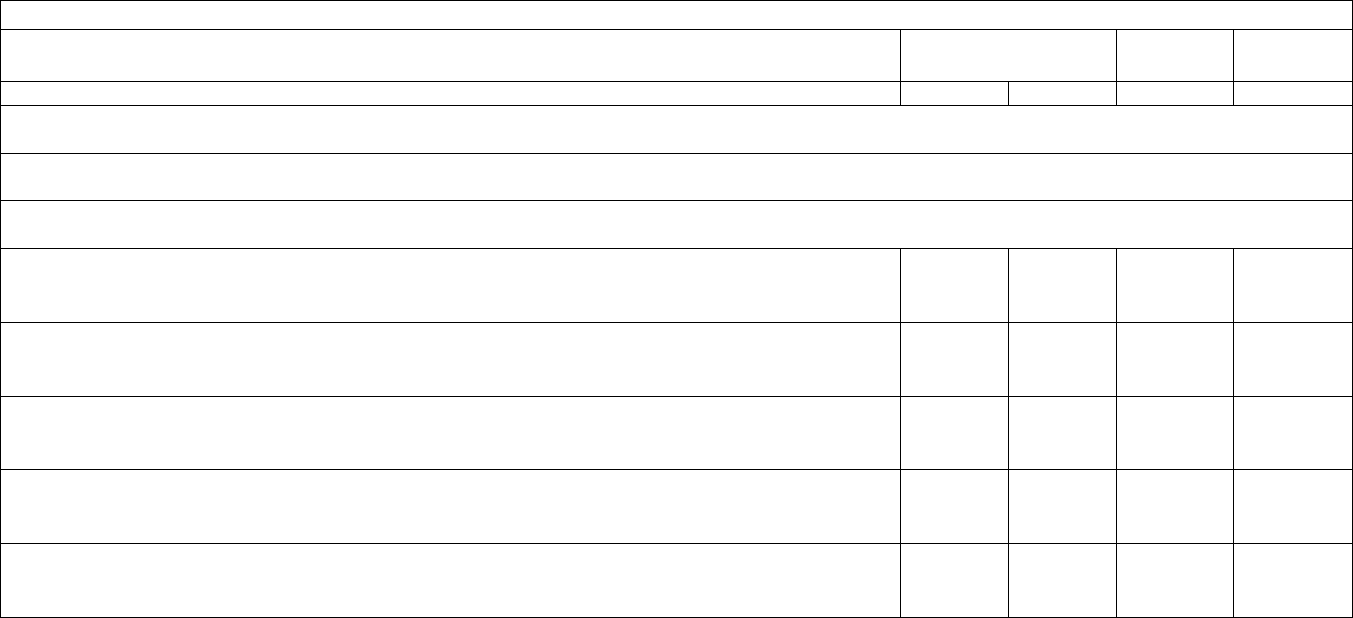
METAL AND NONMETAL MINE SAFETY AND HEALTH
MSHA - 35
WORKLOAD AND PERFORMANCE SUMMARY
FY 2018
Enacted
FY 2019
Enacted
FY 2020
Request
Target
Result
Target
Target
Metal and Nonmetal Mine Safety and Health
Strategic Goal 2 - Promote Safe Jobs and Fair Workplaces for All Americans
Strategic Objective MSHA 2.2 - Prevent fatalities, disease, and injury from mining, and secure safe and healthful working conditions for America's miners.
MSHA-01
Percent of 105(c) investigations of miner discrimination complaints that are completed
within 60 days of receipt 85% 85% 85% --
MSHA-
MNM-01.1
Number of regular mandated MNM underground inspections
960 899 960 --
MSHA-
MNM-01.2
Number of regular mandated MNM surface inspections
16,300 15,032 16,300 --
MSHA-02
Percent of investigations of miner requests for temporary reinstatements that are
completed within 20 days of receipt 75% 75% 75% --
MSHA-03
Number of 103(g) imminent danger complaint investigations initiated within 1 day of
receipt 100% 100% 100% --
Legend:
(r) Revised
(e) Estimate
(base) Baseline
-- Not Applicable
TBD - To Be Determined
[p] - Projection
METAL AND NONMETAL MINE SAFETY AND HEALTH
MSHA - 36
MNMSH will continue its enforcement strategies and initiatives through the following:
• MSHA-INSP1and MSHA-INSP2: MNMSH will continue to complete all regular
mandated inspections. The actual number of surface and underground inspections
completed will be dependent on the number of active metal and nonmetal mines for each
year. MNMSH will conduct targeted inspections at mines with poor compliance history
or that have adverse conditions.
The Mine Act gives miners the right to be full stakeholders in their own safety and health by
participating in the inspection process through a representative of their choosing, speaking out
about hazards, refusing to work to work in dangerous conditions, and exercising other rights.
These efforts support workers’ rights through the following in FY 2019:
• MSHA-01: Complete 85 percent of 105(c) investigations of miner discrimination
complaints within 60 days of receipt of a complaint.
• MSHA-02: Complete 85 percent of investigations of miner requests for temporary
reinstatement within 20 days of receipt.
• MSHA-03: Initiate 100 percent of 103(g) imminent danger complaint investigations
within one day of receipt.
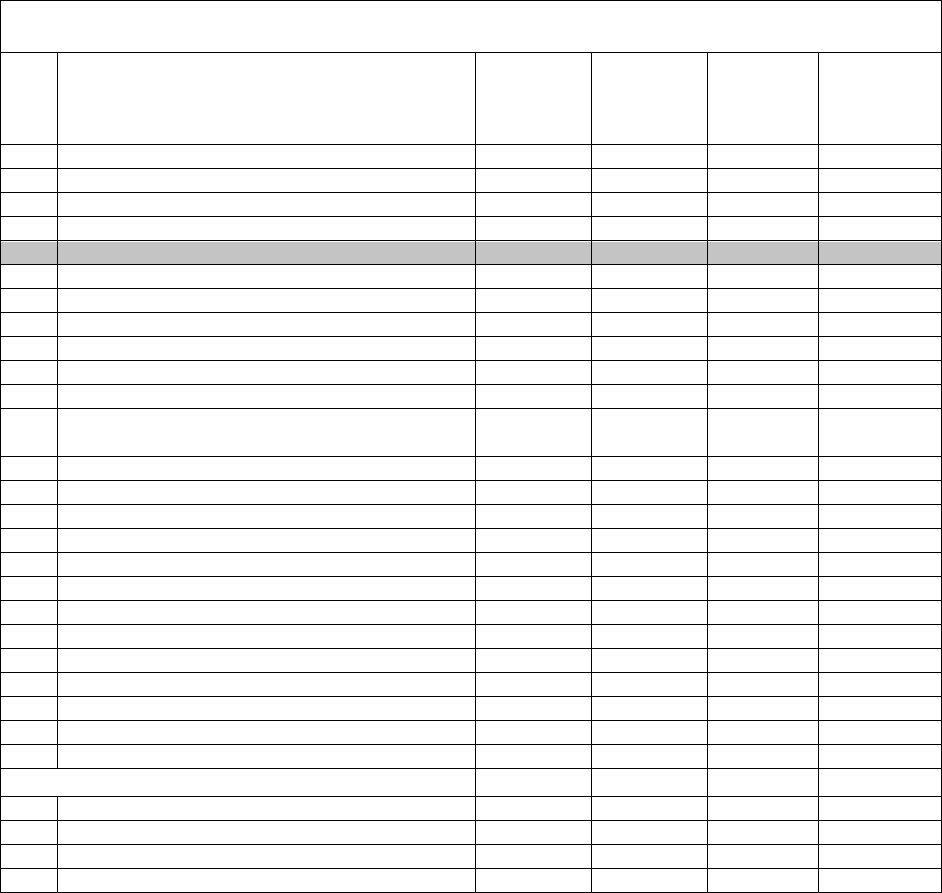
METAL AND NONMETAL MINE SAFETY AND HEALTH
MSHA - 37
BUDGET ACTIVITY BY OBJECT CLASS
(Dollars in Thousands)
FY 2018
Enacted
FY 2019
Enacted
FY 2020
Request
Diff. FY20
Request /
FY19
Enacted
11.1
Full-time permanent
48,181
50,416
0
-50,416
11.3
Other than full-time permanent
26
0
0
0
11.5
Other personnel compensation
953
1,044
0
-1,044
11.8
Special personal services payments
0
0
0
0
11.9
Total personnel compensation
49,160
51,460
0
-51,460
12.1
Civilian personnel benefits
19,341
20,061
0
-20,061
13.0
Benefits for former personnel
2
0
0
0
21.0
Travel and transportation of persons
8,016
7,705
0
-7,705
22.0
Transportation of things
2,808
2,808
0
-2,808
23.1
Rental payments to GSA
5,586
5,185
0
-5,185
23.2
Rental payments to others
13
10
0
-10
23.3
Communications, utilities, and miscellaneous
charges
399
486
0
-486
24.0
Printing and reproduction
16
13
0
-13
25.1
Advisory and assistance services
7
4
0
-4
25.2
Other services from non-Federal sources
290
168
0
-168
25.3
Other goods and services from Federal sources 1/
8,469
4,588
0
-4,588
25.4
Operation and maintenance of facilities
0
0
0
0
25.5
Research and development contracts
0
0
0
0
25.7
Operation and maintenance of equipment
518
1,326
0
-1,326
26.0
Supplies and materials
923
1,158
0
-1,158
31.0
Equipment
661
1,235
0
-1,235
41.0
Grants, subsidies, and contributions
0
0
0
0
42.0
Insurance claims and indemnities
0
2
0
-2
Total
96,209
96,209
0
-96,209
1/Other goods and services from Federal sources
Working Capital Fund
7,547
3,847
0
-3,847
DHS Services
286
239
0
-239
HHS Services
232
232
0
-232
Services by Other Government Departments
404
270
0
-270
METAL AND NONMETAL MINE SAFETY AND HEALTH
MSHA - 38
CHANGES IN FY 2020
(Dollars in Thousands)
Activity Changes
Built-In
To Provide For:
Costs of pay adjustments
$0
Personnel benefits
0
One day more of pay
0
Federal Employees' Compensation Act (FECA)
0
Benefits for former personnel
0
Travel and transportation of persons
0
Transportation of things
0
Rental payments to GSA
0
Rental payments to others
0
Communications, utilities, and miscellaneous charges
0
Printing and reproduction
0
Advisory and assistance services
0
Other services from non-Federal sources
0
Working Capital Fund
0
Other Federal sources (DHS Charges)
0
Other goods and services from Federal sources
0
Research & Development Contracts
0
Operation and maintenance of facilities
0
Operation and maintenance of equipment
0
Supplies and materials
0
Equipment
0
Grants, subsidies, and contributions
0
Insurance claims and indemnities
0
Built-Ins Subtotal
$0
Net Program
-$96,209
Direct FTE
-584
Estimate
FTE
Base
$96,209
584
Program Increase
$0
0
Program Decrease
-$96,209
-584
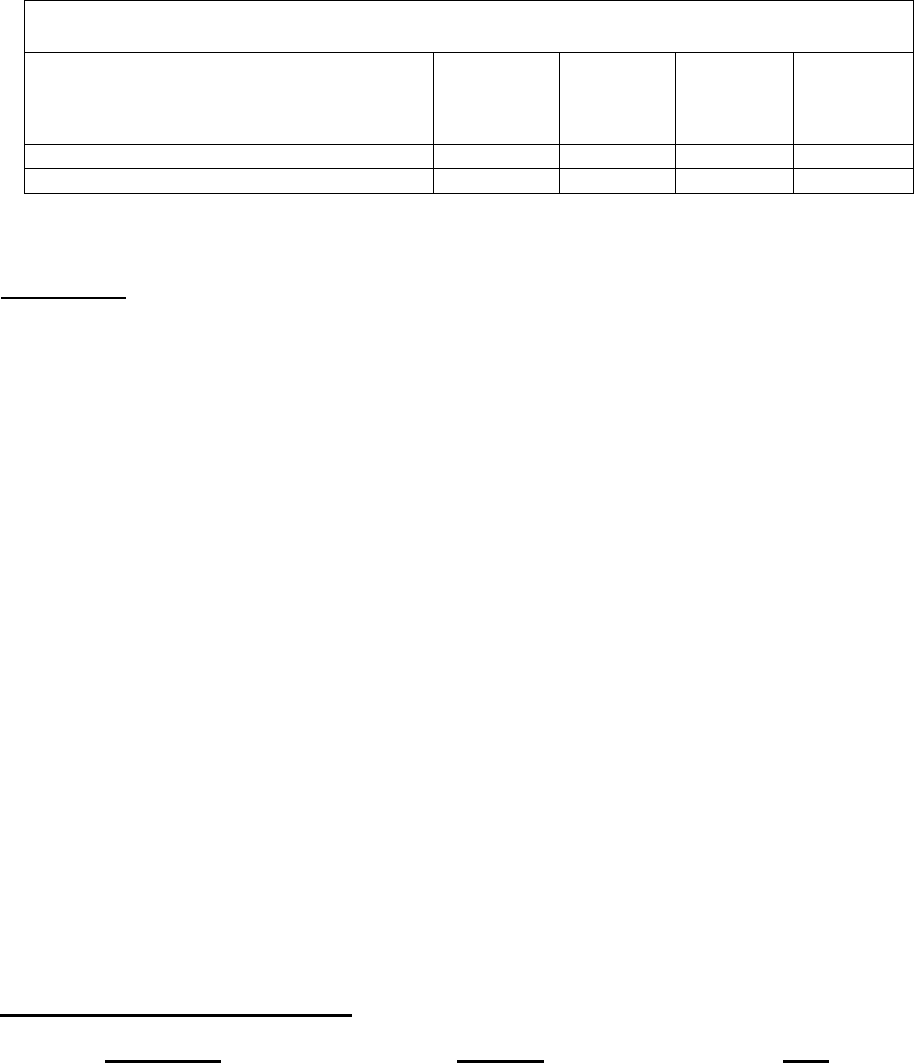
OFFICE OF STANDARDS, REGULATIONS, AND VARIANCES
MSHA - 39
BUDGET AUTHORITY BEFORE THE COMMITTEE
(Dollars in Thousands)
FY 2018
Enacted
FY 2019
Enacted
FY 2020
Request
Diff. FY20
Request /
FY19
Enacted
Activity Appropriation
5,382
5,382
5,382
0
FTE
16
19
19
0
NOTE: FY 2018 reflects actual FTE. Authorized FTE for FY 2018 was 11.
Introduction
The Office of Standards, Regulations, and Variances (OSRV), in coordination with the Office of
the Solicitor Mine Safety and Health Division and other MSHA program offices, develops
standards and regulations for the mining industry that protect the safety and health of miners.
These standards and regulations establish enforcement requirements for compliance in
accordance with the Mine Act, as amended by the MINER Act. OSRV maintains MSHA’s
rulemaking docket and assures transparency in the regulatory process by posting all rulemaking
documents on Regulations.gov.
OSRV also administers MSHA’s Petition for Modification program, the Freedom of Information
Act (FOIA) program, and information collection activities under the Paperwork Reduction Act
of 1995.
OSRV proposes and promulgates new and improved safety and health standards and regulations
on the basis of information submitted to the Secretary by interested parties, including
representatives of any organization of employers or employees, nationally recognized standards-
producing organizations, the Secretary of Health and Human Services (HHS), HHS’s National
Institute for Occupational Safety and Health (NIOSH), and States or political subdivisions, or on
the basis of information developed by the Secretary or otherwise available.
In accordance with Executive Orders (E.O.) 12866 and 13563, MSHA performs an analysis of
anticipated benefits and costs of each significant regulatory action, develops and publishes
MSHA’s Semi-Annual Regulatory Agenda and Regulatory Plan, and reviews existing rules to
identify regulations that are inconsistent with E.O. policy directives.
Five-Year Budget Activity History
Fiscal Year
Funding
(Dollars in Thousands)
FTE
2015
$5,416
23
2016
$5,416
24
2017
$4,500
18
2018
$5,382
11
2019
$4,500
13

OFFICE OF STANDARDS, REGULATIONS, AND VARIANCES
MSHA - 40
FY 2020
MSHA requests $5,382,000 and 19 FTE for OSRV. Funding supports MSHA’s priority to
strengthen regulatory efforts through the following:
• Continue to work with NIOSH and the mining community on approaches to control and
monitor miners’ exposure to diesel exhaust in underground coal and metal and nonmetal
mines. MSHA and NIOSH will continue to work with the Diesel Exhaust Effects
Partnership to share data and information on the effectiveness of the Agency’s existing
standards and policy guidance on controlling underground miners’ exposure to diesel
exhaust.
• Continue to work with stakeholders on regulatory reform of existing standards. MSHA
will review and analyze data and information received from the mining community to
develop regulatory actions responsive to develop frequency, in accordance with E.O.
13777, Enforcing the Regulatory Reform Agenda.
• Continue to work with stakeholders on the Agency’s efforts to prevent accidents that
involve mobile equipment at surface mines and belt conveyors at surface and
underground mines.
• Continue to work on the Agency’s retrospective review of the final rule entitled,
Lowering Miners’ Exposure to the Respirable Coal Mine Dust, Including Continuous
Personal Dust Monitors (CPDM). MSHA will work with NIOSH and the coal mining
community to evaluate existing standards to determine if these standards are achieving
regulatory objectives and respirable dust levels to protect miners’ health. MSHA will
review the National Academy of Sciences study to determine if new regulatory and/or
non-regulatory actions should be taken.
• Continue to work on a request for information seeking input from stakeholders on
existing regulations that could be revised to include alternatives to safety standards which
MSHA has approved in Petitions for Modification submitted by mine operators.
FY 2020 funding will also support OSRV’s efforts to process and publish documents related to
requests for variances from existing safety standards (Petitions for Modification). In FY 2020,
OSRV estimates 40 requests for variances from safety standards will be processed.
OSRV also administers MSHA’s FOIA program and information collection activities under the
Paperwork Reduction Act of 1995. In FY 2020, OSRV will:
• Process approximately 1,000 requests for information under FOIA.
• Publish an estimated 19 Federal Register notices to notify the public that MSHA is
reviewing the Agency’s information collection requirements and requesting public
comments in accordance with the Paperwork Reduction Act of 1995. As new rules are
drafted, additional paperwork packages will be developed, as appropriate.

OFFICE OF STANDARDS, REGULATIONS, AND VARIANCES
MSHA - 41
FY 2019
FY 2019 funding supports MSHA’s priority to strengthen regulatory efforts through work on the
following:
• Published a Notice in the Federal Register on December 21, 2018, that announced revised
hourly rate for the fees charged to applicants and approval holders for testing, evaluating,
and approving products for use in mines.
• Review and analyze comments and data received in response to the Retrospective Study
of Respirable Coal Mine Dust Rule to develop the framework for a study.
• Continue to review and analyze comments and data received in response to an RFI on
safety improvement technologies for mobile equipment at surface mines, and for belt
conveyors at surface and underground mines.
• Continue to work with NIOSH and the mining community on approaches to control and
monitor miners’ exposure to diesel exhaust in underground coal and metal and nonmetal
mines. MSHA and NIOSH Diesel Health Effects Partnership sponsored a Diesel
Technology Workshop on January 23, 2019.
• Publish a final rule on refuge alternatives for underground coal mines. The final rule is in
response to an order of the United States Court of Appeals for the District of Columbia
Circuit.
• Continue to review for potential rulemaking standards for which mine operators
frequently request variances, such as non-permissible surveying equipment (30 C.F.R. §§
75.500(d), 75.507-1(a), and 75.1002(a)) and drilling oil and gas wells around coal mine
shafts (30 C.F.R. § 75.1700).
• Continue to review and analyze comments received from stakeholders on those
regulations that could be repealed, replaced, or modified without reducing miners’ safety
or health, as required by Executive Order 13777, entitled “Enforcing the Regulatory
Reform Agenda.”
• MSHA reviewed the Mine Rescue Teams Instruction Guides IG7 and IG7A and
determined that the existing guidance provides team members with the necessary
knowledge and skills to respond effectively in the event of an emergency. MSHA is
requesting comments on the existing Instruction Guides to improve the quality and
effectiveness of instruction and skills training for coal mine rescue teams. Comments
were due on February 22, 2019.
FY 2019 funding will also support OSRV’s efforts to process and publish documents related to
requests for variances from existing safety standards (Petitions for Modification). In FY 2019,
OSRV estimates 45 requests for variances from safety standards will be processed.

OFFICE OF STANDARDS, REGULATIONS, AND VARIANCES
MSHA - 42
OSRV also administers MSHA’s FOIA program and information collection activities under the
Paperwork Reduction Act of 1995. In FY 2019, OSRV will:
• Process approximately 1,000 requests for information under FOIA in accordance with the
President’s Memorandum on Transparency and Open Government that includes
identifying and posting agency information in anticipation of potential FOIA requests.
• Publish an estimated 26 Federal Register notices to notify the public that MSHA is
reviewing the agency’s information collection requirements and requesting public
comments in accordance with the Paperwork Reduction Act of 1995. As new rules are
drafted, additional paperwork packages will be developed, as appropriate.
OSRV will continue to provide transparency in the regulatory process by posting background
documents, comments, and transcripts for each rulemaking at www.Regulations.gov.
FY 2018
MSHA’s regulatory accomplishments include the following:
• On June 26, 2018, MSHA published an RFI on safety improvement technologies for
mobile equipment at surface mines, and for belt conveyors at surface and underground
mines. MSHA held stakeholder meetings August 2018 through September 2018. The
comment period closed on December 24, 2018.
• On July 8, 2018, MSHA published an RFI on a Retrospective Study of the final rule
Lowering Miners’ Exposure to Respirable Coal Mine Dust, Including Continuous
Personal Dust Monitors to solicit comments, data, and information from industry, labor,
NIOSH, and other stakeholders to assist MSHA in developing the framework for a study
to assess the health effects of the dust rule.
• On April 9, 2018, MSHA published a final rule on Examinations of Working Places in
Metal and Nonmetal Mines. This rule provides mine operators additional flexibility in
managing their safety and health programs and reduces regulatory burdens without
reducing the protections afforded miners.
Executive Order 13777, entitled “Enforcing the Regulatory Reform Agenda,” directs each
agency to review existing regulations to assess compliance costs and reduce regulatory burden.
As part of this review, MSHA sought stakeholders’ assistance in identifying those regulations
that could be repealed, replaced, or modified without reducing miners’ safety or health.
In FY 2018, OSRV also:
• Processed 52 requests for variances from safety standards (Petitions for Modification).
• Processed 733 FOIA requests in accordance with the statute and DOL policy.
• Developed supporting statements for and processed 14 information collection requests in
accordance with the Paperwork Reduction Act of 1995.
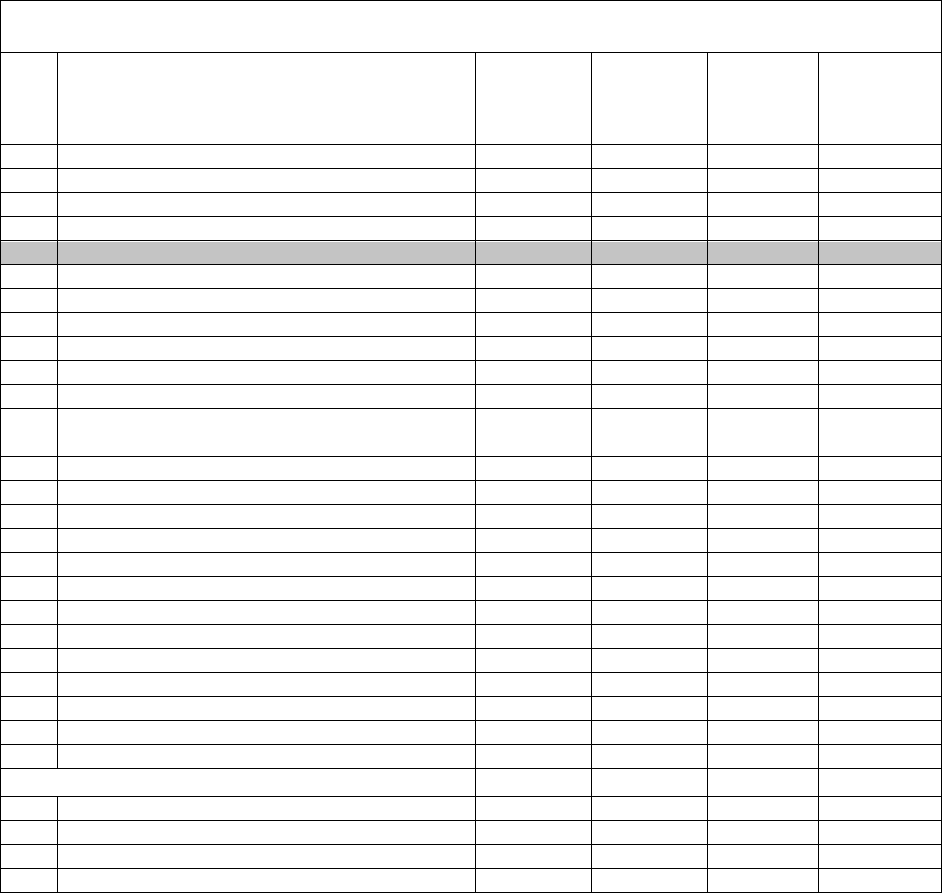
OFFICE OF STANDARDS, REGULATIONS, AND VARIANCES
MSHA - 43
BUDGET ACTIVITY BY OBJECT CLASS
(Dollars in Thousands)
FY 2018
Enacted
FY 2019
Enacted
FY 2020
Request
Diff. FY20
Request /
FY19
Enacted
11.1
Full-time permanent
2,217
2,318
2,318
0
11.3
Other than full-time permanent
0
0
8
8
11.5
Other personnel compensation
48
33
33
0
11.8
Special personal services payments
0
0
0
0
11.9
Total personnel compensation
2,265
2,351
2,359
8
12.1
Civilian personnel benefits
630
679
682
3
13.0
Benefits for former personnel
0
0
0
0
21.0
Travel and transportation of persons
30
25
19
-6
22.0
Transportation of things
1
0
0
0
23.1
Rental payments to GSA
180
167
167
0
23.2
Rental payments to others
8
22
27
5
23.3
Communications, utilities, and miscellaneous
charges
13
6
6
0
24.0
Printing and reproduction
118
76
76
0
25.1
Advisory and assistance services
63
62
62
0
25.2
Other services from non-Federal sources
48
39
30
-9
25.3
Other goods and services from Federal sources 1/
2,013
1,910
1,909
-1
25.4
Operation and maintenance of facilities
0
0
0
0
25.5
Research and development contracts
0
0
0
0
25.7
Operation and maintenance of equipment
7
38
38
0
26.0
Supplies and materials
6
6
6
0
31.0
Equipment
0
1
1
0
41.0
Grants, subsidies, and contributions
0
0
0
0
42.0
Insurance claims and indemnities
0
0
0
0
Total
5,382
5,382
5,382
0
1/Other goods and services from Federal sources
Working Capital Fund
1,980
1,878
1,877
-1
DHS Services
9
8
8
0
HHS Services
23
23
23
0
Services by Other Government Departments
1
1
1
0
OFFICE OF STANDARDS, REGULATIONS, AND VARIANCES
MSHA - 44
CHANGES IN FY 2020
(Dollars in Thousands)
Activity Changes
Built-In
To Provide For:
Costs of pay adjustments
$0
Personnel benefits
0
One day more of pay
11
Federal Employees' Compensation Act (FECA)
0
Benefits for former personnel
0
Travel and transportation of persons
0
Transportation of things
0
Rental payments to GSA
0
Rental payments to others
5
Communications, utilities, and miscellaneous charges
0
Printing and reproduction
0
Advisory and assistance services
0
Other services from non-Federal sources
0
Working Capital Fund
-1
Other Federal sources (DHS Charges)
0
Other goods and services from Federal sources
0
Research & Development Contracts
0
Operation and maintenance of facilities
0
Operation and maintenance of equipment
0
Supplies and materials
0
Equipment
0
Grants, subsidies, and contributions
0
Insurance claims and indemnities
0
Built-Ins Subtotal
$15
Net Program
-$15
Direct FTE
0
Estimate
FTE
Base
$5,397
19
Program Increase
$0
0
Program Decrease
-$15
0

OFFICE OF ASSESSMENTS
MSHA - 45
BUDGET AUTHORITY BEFORE THE COMMITTEE
(Dollars in Thousands)
FY 2018
Enacted
FY 2019
Enacted
FY 2020
Request
Diff. FY20
Request /
FY19
Enacted
Activity Appropriation
7,445
7,445
7,445
0
FTE
49
49
49
0
NOTE: FY 2018 reflects actual FTE. Authorized FTE for FY 2018 was 44.
Introduction
The Office of Assessments (OA) administers regulations pertaining to assessments and
collections of civil penalties for violations of the Mine Act, as amended by the MINER Act and
safety and health standards; as well as the Technical Compliance and Special Investigations
Program of discrimination complaints filed under Section 105(c) of the Mine Act by miners,
representatives of miners, or applicants for employment, and investigation of possible knowing
or willful violations under Section 110 of the Mine Act. OA also manages data analysis for
MSHA’s Pattern of Violations (POV) Program, which identifies mines exhibiting a pattern of
significant and substantial violations at a mine. In addition, OA manages MSHA’s
Accountability Program, which ensures enforcement policies and procedures are performed
effectively and appropriately.
Five-Year Budget Activity History
Fiscal Year
Funding
(Dollars in Thousands)
FTE
2015
$6,976
52
2016
$6,976
52
2017
$6,627
56
2018
$7,445
44
2019
$6,627
44
Historically, about 7 percent of mine operators allowed penalties to lapse into delinquency. Since
the Scofflaw Program was launched in 2007, over $60 million in delinquent penalties have
accrued; however, until March 2018 MSHA issued few citations for failure to pay final penalties.
On March 6, 2018, MSHA delivered 30-day demand letters to an initial list of non-compliant
scofflaw operators, reminding them of the debt they owe, providing them an opportunity to set
up a payment plan if they cannot pay in full, and making clear the consequences of non-payment.
MSHA will repeat this process monthly until all collectible amounts are accounted for.
FY 2020
MSHA requests $7,445,000 and 49 FTE for the OA budget activity. In FY 2020, OA will
continue the following efforts:

OFFICE OF ASSESSMENTS
MSHA - 46
• Assess civil penalties for violations of the Mine Act as amended by the MINER Act, in
accordance with statutory criteria, and at levels that encourage compliance.
• Collect and account for penalties paid, and account for all penalty cases in litigation before
the Federal Mine Safety and Health Review Commission (FMSHRC).
• Coordinate MSHA’s accountability functions.
• Coordinate MSHA’s enhanced special enforcement initiatives and special investigations
programs.
OA anticipates it will conduct approximately 3–5 enforcement field office reviews annually by
the Technical Compliance Investigation Office for purposes of ensuring compliance with
required investigative practices and procedures. OA anticipates it will conduct 14 accountability
audits for the purpose of monitoring MSHA districts compliance with established policies and
directives for conducting inspection activities and tracking and review of corrective actions. OA
will conduct an annual screening to identify mines exhibiting a Pattern of Violations (POV)
under Section 104 of the Mine Act.
FY 2019
In FY 2019, OA will continue to support DOL’s strategic objective to protect workers’ rights
through MSHA’s performance goal to protect miners from discrimination. To ensure that
enforcement personnel conduct quality investigations, OA will review all discrimination
investigations conducted by enforcement personnel. This will provide an added level of
accountability for the discrimination investigation process and demonstrate MSHA’s
commitment to protecting a miner’s right to report health and safety hazards without fear of
retaliation. To this end, MSHA expects that over 80 percent of discrimination investigation
reports will be complete and accurate without return for further development.
OA estimates it will conduct accountability reviews of the Coal and Metal and Nonmetal
enforcement activities. OA also plans to conduct an annual screening to identify mines
exhibiting a POV under Section 104 of the Mine Act. OA will continue to support MSHA’s
Scofflaw Program initiative to bring about improved health and safety conditions at mines by
leveraging the legal actions available when civil penalties are not being paid.
FY 2018
In FY 2018, OA accomplished the following:
• Issued 22,288 Notices of Proposed Civil Penalty Assessments, proposing $55 million in
civil penalties for 97,541 citations and orders for violations of health and safety standards
cited by MSHA enforcement inspectors.
• Proposed special assessed civil penalties for 249 violations, and three flagrant violations.
OA also collected and accounted for penalties paid, and accounted for all penalty cases in
litigation before FMSHRC. In FY 2018, OA accomplished the following:
OFFICE OF ASSESSMENTS
MSHA - 47
• Received and accounted for 23,740 payments from mine operators totaling $47 million.
• Referred 2,521 delinquent civil penalty cases accounting for $7.2 million to the
Department of the Treasury for collection.
• Worked with the FMSHRC to docket 2,639 penalty contest cases involving 15,290
violations totaling $27.5 million in decision amounts.
The Office of Accountability branch within OA conducted of 14 enforcement district reviews.
These reviews included audits of 478 enforcement activities resulting in 12 required corrective
actions. The review team conducted a root cause analysis to determine the most effective
corrective actions and monitored the corrective actions, including documentation to ensure the
corrective actions were completed by the enforcement programs.
OA conducted the annual screening for the POV Program. For the fourth consecutive year, there
were no mines identified as meeting all of the POV screening criteria.
OA worked with MSHA’s enforcement programs and the Office of the Solicitor to pursue
scofflaw mine operators that exhibit a disregard for mandatory safety and health standards.
MSHA issued 55 letters to operators that met the screening criteria which resulted in 10
operators paying their debt in full of slightly more than $1 million. Moreover, 34 operators have
either entered into or requested a payment agreement for an additional $4 million.
The Technical Compliance Investigation Office (TCIO) coordinated and provided oversight of
investigations of complaints of alleged acts of discrimination of miners.
TCIO completed 105 discrimination case investigations in FY 2018 and resolved 49 temporary
reinstatement requests. OA reviewed 100 percent of all special investigations completed by
enforcement personnel to ensure thorough, properly developed investigations and
recommendations. The Department of Labor (DOL) filed 16 requests for temporary
reinstatement with the FMSHRC on behalf of miners who submitted complaints of
discrimination in the form of a suspension, layoff, discharge or other adverse action.
Additionally, DOL filed 26 complaints alleging mine safety discrimination.
MSHA resolved 320 Section 110 cases. OA proposed 75 civil penalties against 54 individuals
with proposed assessments totaling $254,700. One case was referred to the Department of
Justice for possible criminal prosecution. To ensure compliance with required investigative
practices, the Technical Compliance Investigation Office conducted seven enforcement field
office reviews.
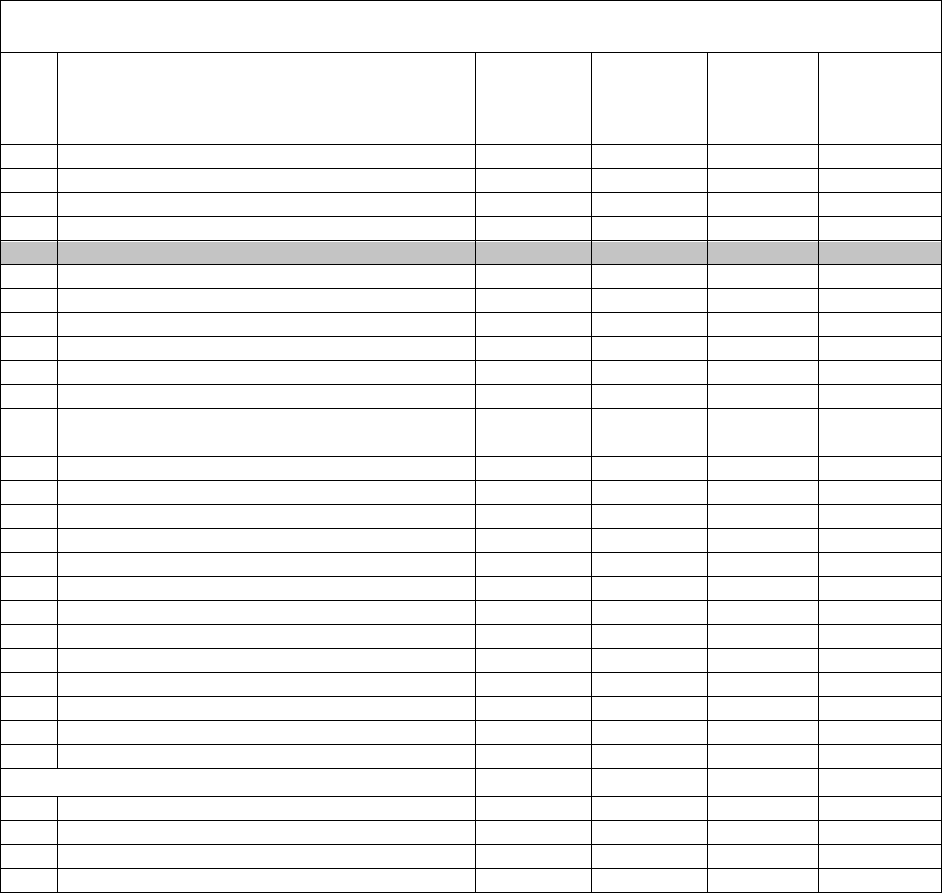
OFFICE OF ASSESSMENTS
MSHA - 48
BUDGET ACTIVITY BY OBJECT CLASS
(Dollars in Thousands)
FY 2018
Enacted
FY 2019
Enacted
FY 2020
Request
Diff. FY20
Request /
FY19
Enacted
11.1
Full-time permanent
4,342
4,465
4,465
0
11.3
Other than full-time permanent
0
0
16
16
11.5
Other personnel compensation
73
85
85
0
11.8
Special personal services payments
0
0
0
0
11.9
Total personnel compensation
4,415
4,550
4,566
16
12.1
Civilian personnel benefits
1,422
1,445
1,450
5
13.0
Benefits for former personnel
1
1
1
0
21.0
Travel and transportation of persons
41
70
59
-11
22.0
Transportation of things
0
0
0
0
23.1
Rental payments to GSA
237
202
202
0
23.2
Rental payments to others
2
0
0
0
23.3
Communications, utilities, and miscellaneous
charges
191
152
152
0
24.0
Printing and reproduction
0
1
1
0
25.1
Advisory and assistance services
0
0
0
0
25.2
Other services from non-Federal sources
87
41
34
-7
25.3
Other goods and services from Federal sources 1/
950
864
861
-3
25.4
Operation and maintenance of facilities
0
0
0
0
25.5
Research and development contracts
0
0
0
0
25.7
Operation and maintenance of equipment
30
104
104
0
26.0
Supplies and materials
9
10
10
0
31.0
Equipment
60
5
5
0
41.0
Grants, subsidies, and contributions
0
0
0
0
42.0
Insurance claims and indemnities
0
0
0
0
Total
7,445
7,445
7,445
0
1/Other goods and services from Federal sources
Working Capital Fund
878
796
793
-3
DHS Services
25
21
21
0
HHS Services
39
42
42
0
Services by Other Government Departments
8
5
5
0
OFFICE OF ASSESSMENTS
MSHA - 49
CHANGES IN FY 2020
(Dollars in Thousands)
Activity Changes
Built-In
To Provide For:
Costs of pay adjustments
$0
Personnel benefits
0
One day more of pay
21
Federal Employees' Compensation Act (FECA)
0
Benefits for former personnel
0
Travel and transportation of persons
0
Transportation of things
0
Rental payments to GSA
0
Rental payments to others
0
Communications, utilities, and miscellaneous charges
0
Printing and reproduction
0
Advisory and assistance services
0
Other services from non-Federal sources
0
Working Capital Fund
-3
Other Federal sources (DHS Charges)
0
Other goods and services from Federal sources
0
Research & Development Contracts
0
Operation and maintenance of facilities
0
Operation and maintenance of equipment
0
Supplies and materials
0
Equipment
0
Grants, subsidies, and contributions
0
Insurance claims and indemnities
0
Built-Ins Subtotal
$18
Net Program
-$18
Direct FTE
0
Estimate
FTE
Base
$7,463
49
Program Increase
$0
0
Program Decrease
-$18
0

EDUCATIONAL POLICY AND DEVELOPMENT
MSHA - 51
BUDGET AUTHORITY BEFORE THE COMMITTEE
(Dollars in Thousands)
FY 2018
Enacted
FY 2019
Enacted
FY 2020
Request
Diff. FY20
Request /
FY19
Enacted
Activity Appropriation
38,559
38,559
38,559
0
FTE
127
122
122
0
NOTE: FY 2018 reflects actual FTE. Authorized FTE for FY 2018 was 131.
Introduction
The Directorate of Educational Policy and Development (EPD) administers MSHA’s training
programs. EPD plans, monitors, and evaluates all MSHA education and training programs and
provides entry-level and journeyman training for MSHA’s enforcement staff. EPD also
coordinates training programs with other public and private organizations.
EPD manages and operates the National Mine Health and Safety Academy (Academy) located in
Beckley, West Virginia. The Academy provides mine safety and health training to government,
industry and labor officials, as well as MSHA mine enforcement personnel and other MSHA
staff.
EPD also administers the Educational Field and Small Mine Services (EFSMS) program which
provides compliance assistance to mine operators of all sizes across the country. EFSMS works
closely with MSHA’s enforcement programs to identify industry needs and provides compliance
assistance to mines with safety and health issues. EFSMS training specialists review mine
operator training plans, monitor and assist industry instructors to develop and improve their
skills, and assist mine operators with their safety and health programs. EFSMS training
specialists also assist miners to understand their rights and responsibilities under the Mine Act.
EPD supports the mission of the Joseph A. Holmes Association (Association), a nonprofit
organization created in 1916, to promote health and safety in the mining industry. The
Association reaches miners throughout the country by providing technical assistance and
coordinating efforts through grassroots safety and health programs and activities for the mining
community.
EPD also manages the MSHA State Grants Program and the Brookwood-Sago Mine Safety
Grants Program. The State Grants Program supports quality training programs for miners in 48
states, the Navajo Nation, and the Territories. The Brookwood-Sago competitive grants provide
funds for mine safety and health training and education programs for workers and mine operators
to better identify, avoid, and prevent unsafe working conditions in and around mines.
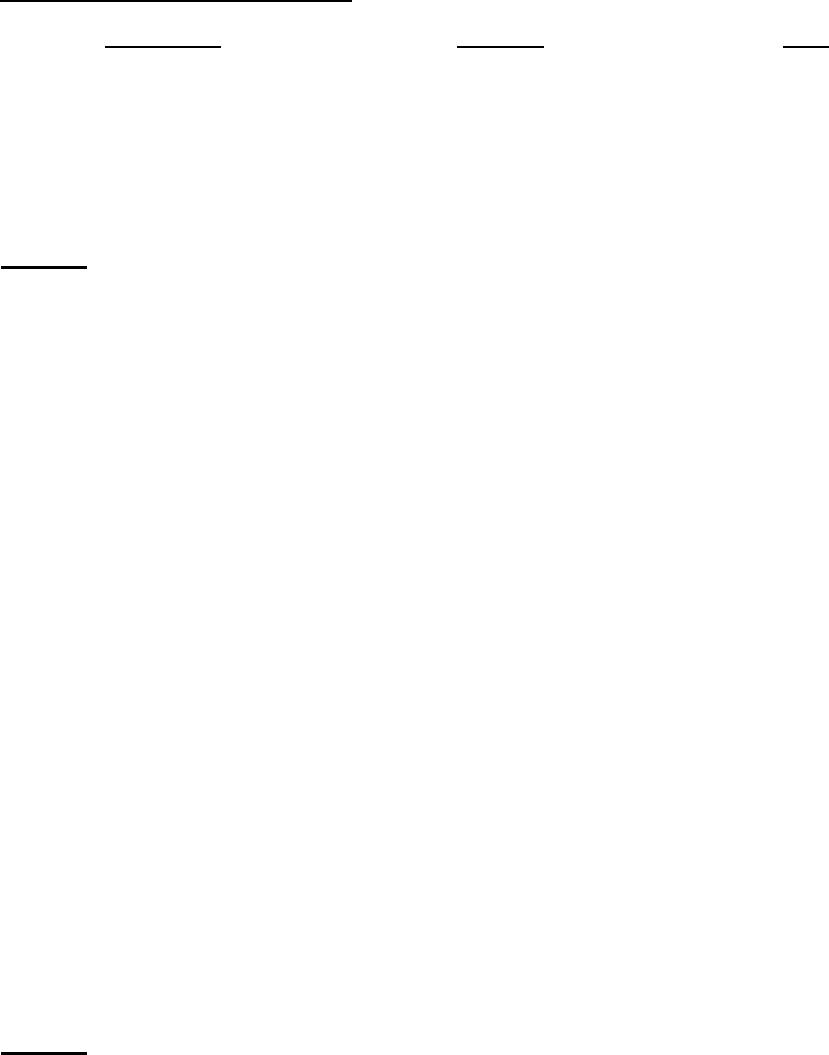
EDUCATIONAL POLICY AND DEVELOPMENT
MSHA - 52
Five-Year Budget Activity History
Fiscal Year
Funding
(Dollars in Thousands)
FTE
2015
$36,320
144
2016
$36,320
143
2017
$39,320
138
2018
$38,559
131
2019
$39,320
127
FY 2020
In FY 2020, MSHA requests $38,559,000 and 122 FTE for the EPD budget activity. EPD will
continue to strengthen and modernize training and education through the following:
• Providing industry outreach and support in various health and safety and training
initiatives focused on reducing workplace injuries, illnesses, and fatalities.
• Continuing onsite monitoring of instructors to evaluate the effectiveness of miner training
and to address the shortcomings of inadequate training.
• Transforming the Academy into a training hub where content is distributed using new
technology for communications, including new methods of training, e.g., virtual reality
and distance learning. Developing additional online courses for use by MSHA’s entry-
level and journeyman level inspector classes, and new online programs designed for the
mining industry.
• Continuing to manage MSHA’s State Grants Program in which the grantees provide
high-quality effective safety and health training and retraining for miners and mine
operators in all states and the Territories. Training will have an emphasis on powered
haulage safety such as, reducing vehicle-on-vehicle collisions, increasing seat belt use,
and improving belt conveyor safety.
• Continuing to enhance MSHA’s distance learning program to complement a library of
hundreds of online courses developed for MSHA’s entry-level inspectors and journeyman
level inspector classes. New online programs designed for the mining industry will also
be created.
• Evaluating instructors in the classroom to ensure miners are receiving adequate and
effective training.
• Providing compliance assistance to the mining industry through EFSMS, including
special attention to small mine operators.
FY 2019
In FY 2019, in order to foster a culture of safety and improve safety and health conditions in the
mining workplace, EPD will strengthen and modernize training and education through the
following:

EDUCATIONAL POLICY AND DEVELOPMENT
MSHA - 53
• Providing industry outreach and support in various health and safety and training
initiatives focused on reducing workplace injuries, illnesses and fatalities.
• Evaluating EPD instructors in the classroom to ensure miners are receiving adequate and
effective training.
• Providing compliance assistance to the mining industry through EFSMS, including
special attention to small mine operators.
• Transforming the Academy into a training hub where content is distributed using new
technology for communications. This will expand the customer base and evolve the
Academy from a historically inward-focused curriculum to a Center of Excellence for
industry-wide training content.
• Continuing onsite monitoring of approved instructors to ensure they are providing
effective health and safety training to miners. EPD will place special emphasis on the
evaluation of contract instructors.
• Expanding its distance learning program to include additional online courses developed
for use by MSHA’s entry-level and journeyman level inspector classes, and new online
programs designed for the mining industry.
FY 2018
In FY 2018, EPD accomplished the following:
• EFSMS provided fatal accident reduction awareness and training for miners through
monthly outreach efforts in collaboration with Metal and Nonmetal Mine Safety and
Health. The initiative provided onsite training observations and training materials that
focused on recent fatal and/or near miss accidents.
• EFSMS approved 1,220 instructor evaluations on the effectiveness of 30 CFR Part 48
training and retraining miners in an effort to address the shortcomings of industry miner
training. EFSMS also provided 69,186 hours of injury and illness prevention training to
the mining industry.
• The Academy continued its evolution toward a 21st Century training hub by providing
training programs to students using traditional, online, and video conference capabilities.
They provided 1,100 course days of instruction, trained 8,000 individual students, and
provided 17,000 student days (Government – 12,000, Mission Industry – 2,500, and Non-
mission Groups – 2,500). The Academy also created 23 new online courses.
• The Academy developed a training program to support the beginning of MSHA’s
initiative to merge Coal and Metal and Nonmetal and create one enforcement program.
They created a plan for developing training in five phases with groups composed of
Academy instructors and staff, program area representatives, and field personnel. The
Academy also assisted with the re-establishment of a national mine rescue organization
within the Joseph A. Holmes Safety Association to address gaps in mine emergency
response.
• The Academy hosted the Southern West Virginia Mine Rescue Contest that brought more
than 600 participants, officials, and guests into the Academy for the week long
competition.
• The Academy completed the "Energy Savings Performance Contract" project through the
U.S. Department of Energy. Utility savings thus far are nearly $100,000. Under the
EDUCATIONAL POLICY AND DEVELOPMENT
MSHA - 54
State Grants Program, MSHA awarded $10,537,000 in grant funding to 48 states, Guam,
Commonwealth of Northern Mariana Island, and the Navajo Nation. A total of 181,000
miners and mine operators were trained.
• In addition, MSHA awarded $250,000 under the Brookwood-Sago Mine Safety Grant
Program to four recipients, that will be focusing on training and training materials on
powered haulage safety (such as reducing vehicle-on-vehicle collisions, increasing seat
belt use, and improving belt conveyor safety), examinations of working places at metal
and nonmetal mines, or mine emergency prevention and preparedness.
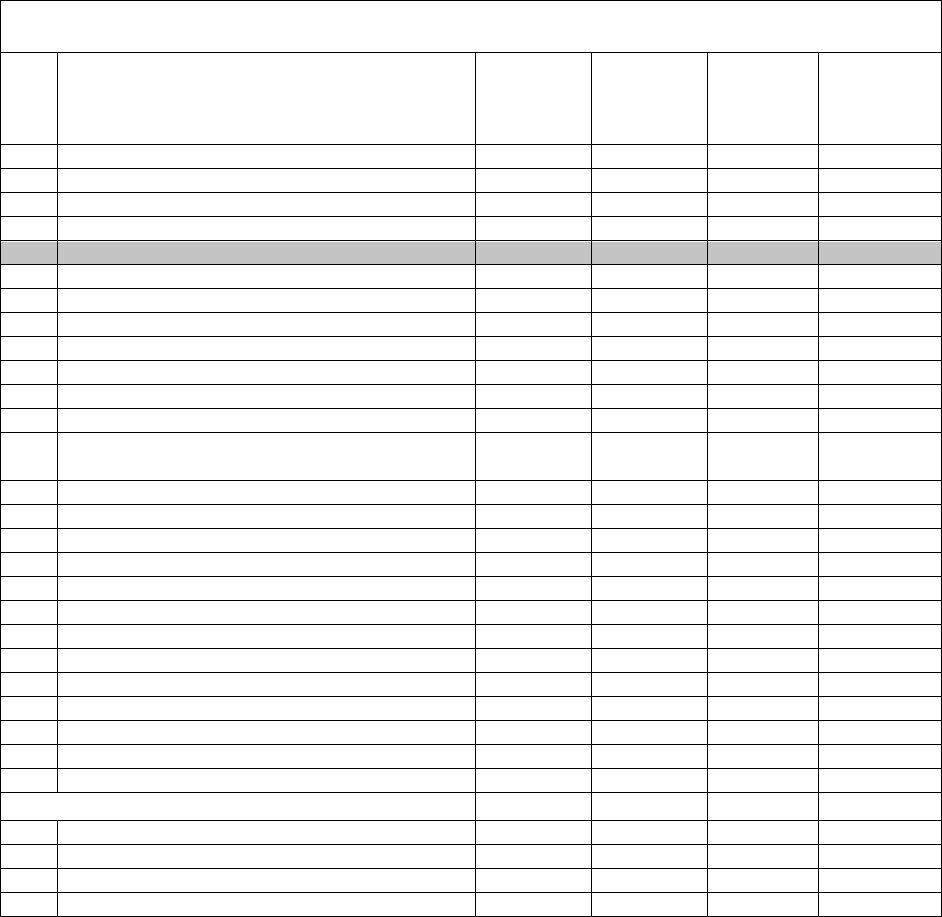
EDUCATIONAL POLICY AND DEVELOPMENT
MSHA - 55
BUDGET ACTIVITY BY OBJECT CLASS
(Dollars in Thousands)
FY 2018
Enacted
FY 2019
Enacted
FY 2020
Request
Diff. FY20
Request /
FY19
Enacted
11.1
Full-time permanent
11,915
11,808
11,808
0
11.3
Other than full-time permanent
32
30
75
45
11.5
Other personnel compensation
212
212
212
0
11.8
Special personal services payments
0
0
0
0
11.9
Total personnel compensation
12,159
12,050
12,095
45
12.1
Civilian personnel benefits
4,336
4,344
4,356
12
13.0
Benefits for former personnel
0
0
0
0
21.0
Travel and transportation of persons
515
547
541
-6
22.0
Transportation of things
422
323
320
-3
23.0
Rent, Communications, and Utilities
0
0
0
0
23.1
Rental payments to GSA
793
736
736
0
23.2
Rental payments to others
0
0
0
0
23.3
Communications, utilities, and miscellaneous
charges
984
806
806
0
24.0
Printing and reproduction
74
109
109
0
25.1
Advisory and assistance services
2
0
0
0
25.2
Other services from non-Federal sources
3,138
3,845
3,803
-42
25.3
Other goods and services from Federal sources 1/
4,285
4,032
4,026
-6
25.4
Operation and maintenance of facilities
0
126
126
0
25.5
Research and development contracts
0
0
0
0
25.7
Operation and maintenance of equipment
461
526
526
0
26.0
Supplies and materials
270
256
256
0
31.0
Equipment
333
72
72
0
41.0
Grants, subsidies, and contributions
10,787
10,787
10,787
0
42.0
Insurance claims and indemnities
0
0
0
0
Total
38,559
38,559
38,559
0
1/Other goods and services from Federal sources
Working Capital Fund
4,108
3,856
3,850
-6
DHS Services
41
34
34
0
HHS Services
64
57
57
0
Services by Other Government Departments
72
85
85
0
EDUCATIONAL POLICY AND DEVELOPMENT
MSHA - 56
CHANGES IN FY 2020
(Dollars in Thousands)
Activity Changes
Built-In
To Provide For:
Costs of pay adjustments
$0
Personnel benefits
0
One day more of pay
60
Federal Employees' Compensation Act (FECA)
-3
Benefits for former personnel
0
Travel and transportation of persons
0
Transportation of things
0
Rental payments to GSA
0
Rental payments to others
0
Communications, utilities, and miscellaneous charges
0
Printing and reproduction
0
Advisory and assistance services
0
Other services from non-Federal sources
0
Working Capital Fund
-6
Other Federal sources (DHS Charges)
0
Other goods and services from Federal sources
0
Research & Development Contracts
0
Operation and maintenance of facilities
0
Operation and maintenance of equipment
0
Supplies and materials
0
Equipment
0
Grants, subsidies, and contributions
0
Insurance claims and indemnities
0
Built-Ins Subtotal
$51
Net Program
-$51
Direct FTE
0
Estimate
FTE
Base
$38,610
122
Program Increase
$0
0
Program Decrease
-$51
0
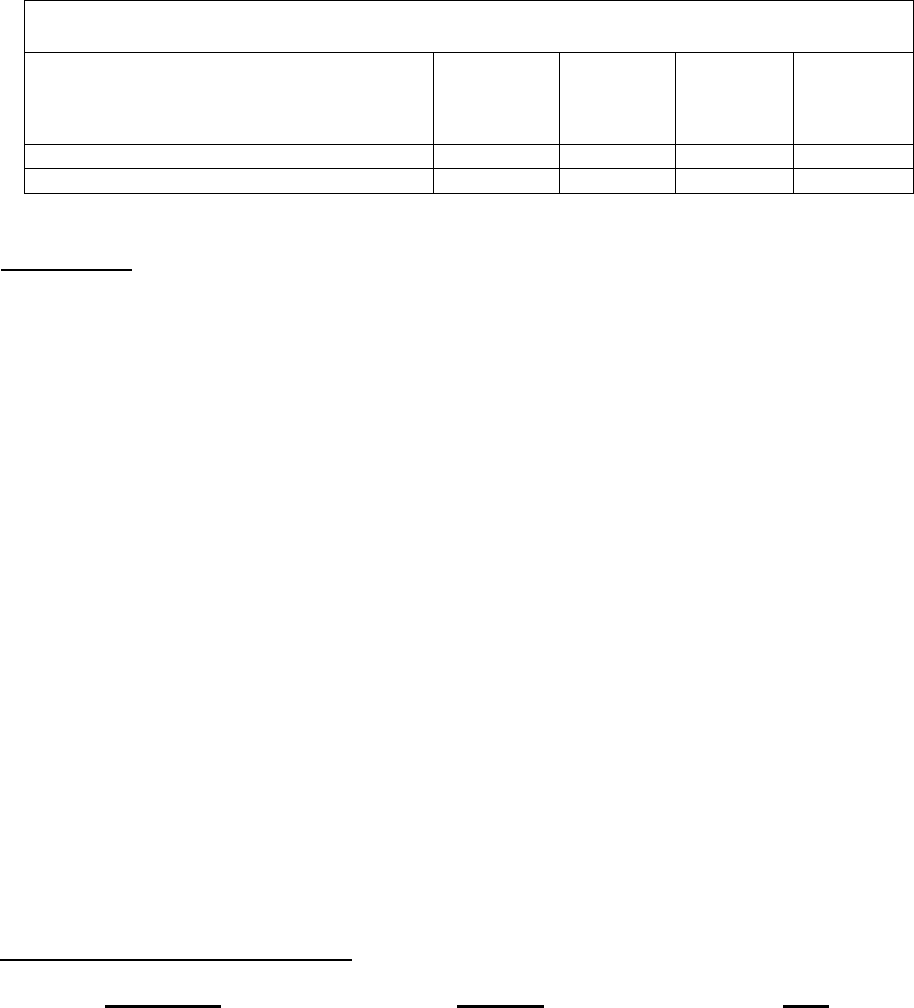
TECHNICAL SUPPORT
MSHA - 57
BUDGET AUTHORITY BEFORE THE COMMITTEE
(Dollars in Thousands)
FY 2018
Enacted
FY 2019
Enacted
FY 2020
Request
Diff. FY20
Request /
FY19
Enacted
Activity Appropriation
34,079
34,079
34,079
0
FTE
201
205
205
0
NOTE: FY 2018 reflects actual FTE. Authorized FTE for FY 2018 was 208.
Introduction
The Directorate of Technical Support includes the Pittsburgh Safety & Health Technology
Center (PSHTC) in Pittsburgh, PA; the Approval and Certification Center (A&CC) in
Triadelphia, WV; the PSHTC-operated National Air and Dust Laboratory (NADL) in Mount
Hope, WV; the Technical Support Headquarters in Arlington, VA; and mine emergency staff
stationed throughout the country. Technical Support provides engineering, scientific, and
technical expertise to MSHA and the mining industry. It conducts field and laboratory
investigations to resolve technical problems associated with implementing the Mine Act, as
amended by the MINER Act. Technical Support provides assistance to MSHA enforcement
programs by conducting engineering analyses of complex mining plans to prevent accidents and
in accident investigations to identify causes and measures to prevent similar accidents. It
maintains a mine emergency response capability which provides equipment and expertise in the
event of a mine emergency, such as an inundation of water or gas, fire, or explosion.
Technical Support administers an approval program to evaluate the safety of equipment and
materials used in the mining industry in the A&CC. It evaluates new technologies to identify
potential improvements to the safety and health of miners. It also performs audits of
manufacturers to maintain a high level of quality assurance.
Technical Support’s laboratories located in Pittsburgh and Mount Hope provide MSHA
enforcement programs with analyses of gas, dust, and other industrial hygiene samples to
determine compliance with regulations. These laboratories are accredited by national oversight
organizations to assure accurate and reliable test data.
Five-Year Budget Activity History
Fiscal Year
Funding
(Dollars in Thousands)
FTE
2015
$33,791
207
2016
$33,791
207
2017
$35,041
208
2018
$34,079
208
2019
$35,041
211

TECHNICAL SUPPORT
MSHA - 58
FY 2020
In FY 2020 MSHA requests $34,079,000 and 205 FTE for the Technical Support activity.
Technical Support will:
• Continue to evaluate for approval and certification mine equipment, materials, and
instruments, with a focus on minimizing backlogs; and continue to evaluate the design of
seals, mining impoundments, mine ventilation systems, and ground control systems;
• Provide engineering and scientific technical expertise to evaluate complex health and
safety issues, identify causes of accidents, and to support MSHA litigation cases;
• Provide laboratory support for MSHA enforcement by analyzing airborne dust samples,
atmospheric gas samples, mine rock dust samples, and other industrial hygiene related
samples collected to determine compliance with health and safety standards; and
• Participate and provide leadership in mine emergency response efforts, including
providing and managing onsite analytical equipment, communications links, and other
sophisticated equipment essential to making critical decisions in rescue/recovery
operations.
Technical Support approves equipment for use in underground mines, and conducts testing and
quality control auditing of mining equipment and materials to ensure manufacturers’ products
continue to meet MSHA standards. Technical Support projects it will complete approximately
300 approval actions in FY 2020, similar to the FY 2019 projection and actions completed in
FY 2018. Since FY 2012, the number of new approval applications received in each fiscal year
has decreased, primarily due to the general decline in coal mining in the United States. The type
of equipment Technical Support evaluates and approves includes the following:
• Proximity detection systems in underground coal mines;
• Permissible electric equipment including longwall mining machines, continuous mining
machines, shuttle cars, and other equipment powered by either Alternating or Direct
Current power sources;
• Portable emergency refuges in underground coal mines;
• Underground diesel equipment, including diesel engines, diesel power packages, diesel
machines, and dust collector systems; and
• Flame resistant materials.
MSHA collects fees for the approval and certification of equipment, materials, and explosives
for use in mines. Projections for FY 2020 include approximately $1,200,000 in approval fees,
which is slightly less than the amount projected for FY 2019. Applications from manufacturers
and associated fees have steadily decreased since 2014, which is due to the decline in US coal
production.
Technical Support’s PSHTC laboratories support enforcement by analyzing respirable dust
samples, mine dust samples, mine air samples, and other industrial hygiene samples. Technical

TECHNICAL SUPPORT
MSHA - 59
Support estimates that its laboratories will analyze 150,000 samples in support of the
enforcement of mine safety and health regulations in FY 2020.
FY 2019
In FY 2019, Technical Support will:
• Provide assistance to enforcement personnel in implementing MINER Act requirements
for wireless communication and electronic tracking systems, refuge alternatives, and fire
resistant conveyor belts in underground mines;
• Continue to approve and certify mine equipment, materials, instruments, and explosives,
with a focus on minimizing backlogs and evaluating the safe design of seals, mining
impoundments, mine ventilation systems, and ground control;
• Analyze fatal accident data in support of the fatality and disaster prevention program with
a focus on prevention of surface haulage accidents. Working with enforcement (Coal and
Metal and Nonmetal) to evaluate safety programs and issue written report of findings and
recommendations by the engineers;
• Continue to provide laboratory support for MSHA enforcement by analyzing airborne
dust samples, atmospheric gas samples, mine rock dust samples, and other industrial
hygiene related samples to determine compliance with health and safety standards;
• Provide technical assistance in the use of the Continuous Personal Dust Monitor to assist
industry in evaluating and controlling respirable coal mine dust hazards, and meet the
requirements of the respirable coal mine dust rule;
• Participate in and provide leadership in mine emergency response efforts, including
providing and managing onsite analytical equipment, communications links, and other
sophisticated equipment essential to making critical decisions in rescue/recovery
operations;
• Continue to further develop and improve the seismic location system, which can remotely
detect and locate trapped miners from a surface location;
• Maintain equipment for MSHA’s mine rescue stations for use during mine emergency
response;
• Evaluate the sections of ground control plans that address blasting, and assist in the
evaluation and investigation of concerns regarding explosives as requested by MSHA’s
enforcement programs;
• Conduct fire protection design reviews and assist in the evaluation and investigation of
concerns related to fire protection issues as requested by MSHA’s enforcement programs;
• Review complex mine plans specific to mine waste impoundments, roof control, seals,
ventilation, and review amendments to these mine plans as requested by MSHA’s
enforcement programs; and
• Provide scientific and engineering technical expertise in the development of standards
and regulations, and in support of MSHA litigation cases.
Technical Support approves equipment for use in underground mines. It conducts testing and
quality control auditing of mining equipment and materials to ensure manufacturers’ products
continue to meet MSHA standards. Technical Support projects it will complete approximately
300 approval actions in FY 2019, approximately the same number as FY 2018. This projection

TECHNICAL SUPPORT
MSHA - 60
is slightly less than the FY 2017 actual of 349. Since FY 2012 the number of approvals
completed in each fiscal year has decreased, primarily because of the general decline in coal
mining in the United States. The types of equipment Technical Support evaluates and approves
include:
• Advanced communication and tracking systems;
• Proximity detection systems in underground coal mines;
• Permissible electric equipment including longwall mining machines, continuous mining
machines, shuttle cars, and other equipment powered by either Alternating or Direct
Current power sources;
• Refuge alternatives in underground coal mines;
• Underground diesel equipment, including diesel engines, diesel power packages, diesel
machines, and dust collector systems; and
• Flame resistant materials approved under Title 30 CFR Parts 7 and 14.
MSHA collects fees for the approval and certification of equipment, materials, and explosives
for use in mines. The Agency projects that approximately $1,300,000 in approval fees will be
collected in FY 2019, similar to FY 2018.
Technical Support’s PSHTC laboratories support enforcement by analyzing respirable dust
samples, mine dust samples, mine air samples, and other industrial hygiene samples. Technical
Support estimates that it will analyze 150,000 samples in FY 2019 to continue assisting with the
enforcement of air quality standards and determining inspection frequency rates for mines based
on the hazard levels identified. The estimate includes a projected increase in Metal and
Nonmetal respirable dust samples.
FY 2018
Technical Support provided engineering, scientific, and technical expertise to other MSHA
program areas. It conducted in-mine studies to maintain the health and safety of miners,
participated in accident investigations, and assisted in mine emergency operations. Technical
Support also tested equipment and materials for safe underground mining use; reviewed and
issued approvals for equipment and products that met established standards; and conducted
testing and quality control auditing of mining equipment and materials to ensure manufacturers’
products continued to meet MSHA standards.
In FY 2018, Technical Support accomplished the following:
• Approved 293 products and collected $1,285,585 in approval fees. These collections
were lower than projected because the reduction in coal mining caused equipment
manufacturers to limit their research activities and product development. Consequently,
manufacturers filed fewer product approval applications with MSHA;
• Completed 667 Quality Assurance actions and responded to 70 technical actions related
to equipment and product approvals;
• Assisted the coal industry in implementing MINER Act refuge alternatives requirements
by completing 23 new refuge alternative structural component approvals and 13
TECHNICAL SUPPORT
MSHA - 61
modifications to existing approvals. Regulations require that prefabricated refuge
alternative structures used in underground coal mines must have MSHA part 7 approvals
by December 31, 2018;
• Assisted the mining industry in implementing the MINER Act wireless communication
and tracking requirements by completing 2 wireless communication or tracking device
approvals; completing 12 wireless communication or tracking device modification
approvals; maintaining a communications and tracking system library which includes
operating manuals for approved systems; maintaining an approved product list online for
all MSHA stakeholders; and providing training to enforcement personnel on
communication and tracking systems and the associated MINER Act requirements;
• Assisted the mining industry in implementing the MINER Act fire resistant conveyor belt
requirements by completing 27 fire resistant conveyor belt tests, resulting in 25 new
product approvals. Two products failed to meet fire resistance requirements. Quality
assurance audits were performed on 19 approved conveyor belts to confirm
manufacturers were meeting MSHA standards;
• Assisted enforcement with 15 fatal accident investigations and 20 serious accident
investigations;
• Provided resources for MSHA’s mine rescue stations for use during mine emergency
response;
• Assisted enforcement by evaluating the blasting specifications for 12 mine operators’
ground control plans and participated on the accident investigation team for a serious
explosives accident in FY 2018;
• Assisted enforcement by evaluating 102 roof control plan amendments addressing
complex mine design issues such as multiple seam interactions and burst risk potential;
• Supported MSHA enforcement and the Solicitor of Labor by providing scientific and
engineering technical expertise in 68 litigation cases;
• Continued to further develop and improve the seismic location system, which can
remotely detect and locate trapped miners from a surface location;
• Supported enforcement by calibrating 4,463 field instrumentation (acoustical, radon,
anemometers) at laboratories located in Pittsburgh, PA and Mt. Hope, WV; and
• Supported enforcement by analyzing respirable dust samples, mine dust samples, mine
air samples, and other industrial hygiene samples at their laboratories located in
Pittsburgh, PA and Mt. Hope, WV.
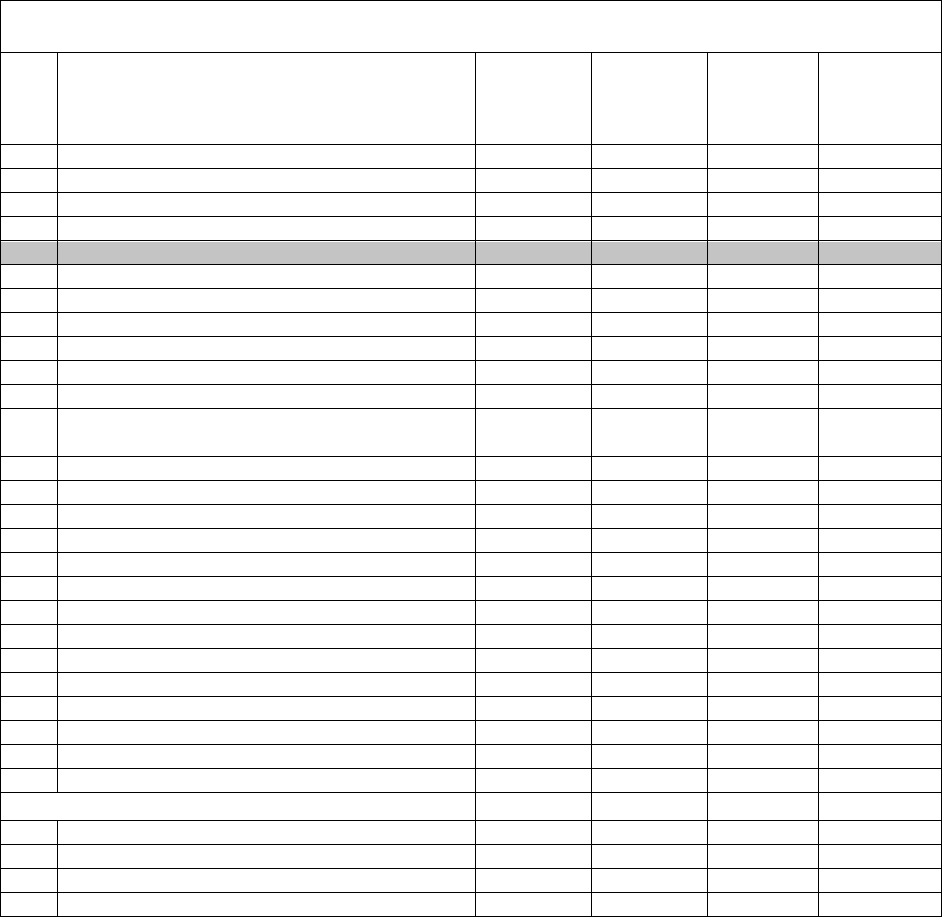
TECHNICAL SUPPORT
MSHA - 62
BUDGET ACTIVITY BY OBJECT CLASS
(Dollars in Thousands)
FY 2018
Enacted
FY 2019
Enacted
FY 2020
Request
Diff. FY20
Request /
FY19
Enacted
11.1
Full-time permanent
17,170
17,958
17,958
0
11.3
Other than full-time permanent
114
75
144
69
11.5
Other personnel compensation
374
382
382
0
11.8
Special personal services payments
0
0
0
0
11.9
Total personnel compensation
17,658
18,415
18,484
69
12.1
Civilian personnel benefits
6,445
6,802
6,822
20
13.0
Benefits for former personnel
0
0
0
0
21.0
Travel and transportation of persons
329
317
291
-26
22.0
Transportation of things
216
215
197
-18
23.1
Rental payments to GSA
180
167
167
0
23.2
Rental payments to others
11
22
27
5
23.3
Communications, utilities, and miscellaneous
charges
306
274
274
0
24.0
Printing and reproduction
1
3
3
0
25.1
Advisory and assistance services
66
26
26
0
25.2
Other services from non-Federal sources
443
465
426
-39
25.3
Other goods and services from Federal sources 1/
4,917
3,913
3,902
-11
25.4
Operation and maintenance of facilities
1,201
1,372
1,372
0
25.5
Research and development contracts
0
0
0
0
25.7
Operation and maintenance of equipment
790
666
666
0
26.0
Supplies and materials
536
695
695
0
31.0
Equipment
980
726
726
0
32.0
Land and Structures
0
0
0
0
41.0
Grants, subsidies, and contributions
0
0
0
0
42.0
Insurance claims and indemnities
0
1
1
0
Total
34,079
34,079
34,079
0
1/Other goods and services from Federal sources
Working Capital Fund
4,228
3,239
3,228
-11
DHS Services
9
8
8
0
HHS Services
676
662
662
0
Services by Other Government Departments
4
4
4
0
TECHNICAL SUPPORT
MSHA - 63
CHANGES IN FY 2020
(Dollars in Thousands)
Activity Changes
Built-In
To Provide For:
Costs of pay adjustments
$0
Personnel benefits
0
One day more of pay
92
Federal Employees' Compensation Act (FECA)
-3
Benefits for former personnel
0
Travel and transportation of persons
0
Transportation of things
0
Rental payments to GSA
0
Rental payments to others
5
Communications, utilities, and miscellaneous charges
0
Printing and reproduction
0
Advisory and assistance services
0
Other services from non-Federal sources
0
Working Capital Fund
-11
Other Federal sources (DHS Charges)
0
Other goods and services from Federal sources
0
Research & Development Contracts
0
Operation and maintenance of facilities
0
Operation and maintenance of equipment
0
Supplies and materials
0
Equipment
0
Grants, subsidies, and contributions
0
Insurance claims and indemnities
0
Land and Structures
0
Built-Ins Subtotal
$83
Net Program
-$83
Direct FTE
0
Estimate
FTE
Base
$34,162
205
Program Increase
$0
0
Program Decrease
-$83
0
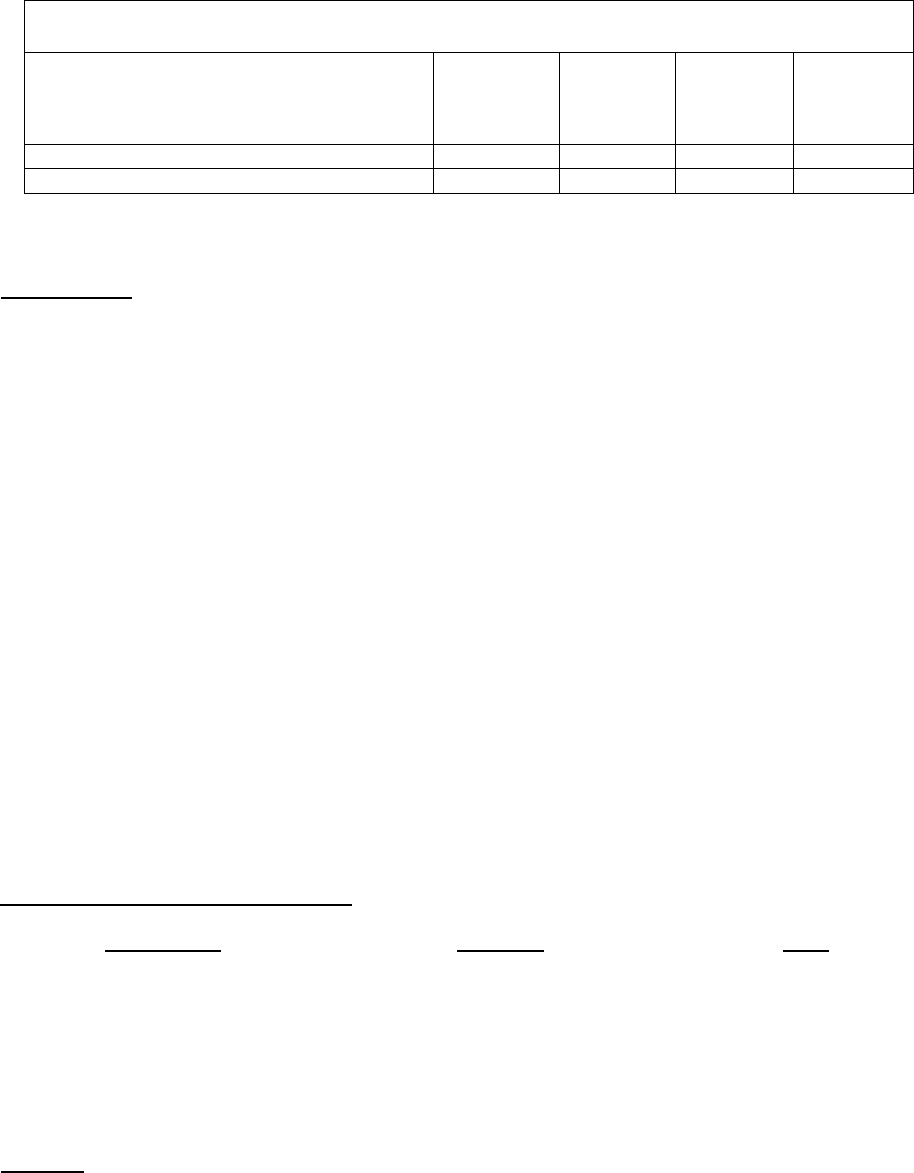
PROGRAM EVALUATION AND INFORMATION RESOURCES
MSHA - 65
BUDGET AUTHORITY BEFORE THE COMMITTEE
(Dollars in Thousands)
FY 2018
Enacted
FY 2019
Enacted
FY 2020
Request
Diff. FY20
Request /
FY19
Enacted
Activity Appropriation
19,083
19,083
21,583
2,500
FTE
51
52
52
0
NOTE: FY 2018 reflects actual FTE. Authorized FTE for FY 2018 was 47.
Introduction
The Directorate of Program Evaluation and Information Resources (PEIR) manages MSHA’s
program evaluation and information technology (IT) program. PEIR evaluates the effectiveness
of the Agency programs, and conducts follow-up reviews to assure appropriate corrective
actions. PEIR manages MSHA’s directive system and uses current and emerging technologies to
provide enforcement personnel, mine operators, and other stakeholders with updated handbooks,
manuals, and related directives.
PEIR collects, analyzes, and publishes data obtained from mine operators and contractors on the
occurrence of work-related injuries and illnesses in the mining industry. MSHA, the mining
community, and the public use this data to assess progress in preventing occupational injuries
and illnesses in the mining industry. PEIR manages MSHA’s Enterprise Architecture (EA)
governance process, and operates and maintains information technology applications, and the
Agency’s internet and intranet sites. PEIR uses the principles of the EA to collaborate with
stakeholders to develop customer driven projects that support MSHA’s mission to protect the
safety and health of miners. PEIR also establishes standards and controls for computer and
networking hardware and software.
Among its other responsibilities, PEIR also serves as a liaison between MSHA and the Office of
the Inspector General (OIG) and the Government Accountability Office (GAO).
Five-Year Budget Activity History
Fiscal Year
Funding
(Dollars in Thousands)
FTE
2015
$17,990
67
2016
$17,990
57
2017
$17,990
53
2018
$19,083
47
2019
$17,990
45
FY 2020
MSHA requests $21,583,000 and 52 FTE for the PEIR budget activity. PEIR’s funding request
includes $2,500,000 to support the Department’s Worker Protection Agencies’ IT Modernization
efforts. These resources will be managed by OCIO on behalf of the worker protection agencies
PROGRAM EVALUATION AND INFORMATION RESOURCES
MSHA - 66
and OCIO will work in collaboration with the worker protection agencies to determine the
specific funding requirements and where funding can best support the Department’s IT
modernization efforts. These funds support enhancing MSHA’s case management system to
track the health of mine inspectors and virtual training tools for inspectors to conduct real-life
simulations to better assess health risks for miners.
PEIR will continue to counter Cybersecurity risks, redundancies, and other system inefficiencies,
and leverage investments across the agencies through reuse, collaboration, cost sharing, and
common governance to produce the most effective use of Information Technology to address
critical business needs. This aligns with the Presidential Executive Order of promoting more
secure, efficient, and economical use of information technology to achieve the Agency’s
mission.
PEIR will support MSHA’s mission to improve the safety and health of the nation’s miners by
continuing the following efforts:
• Continue modernizing MSHA Specific Infrastructure in alignment with DOL’s target
architecture by consolidating and optimizing MSHA’s core mission system into a
modern, unified, and standardized MSHA IT infrastructure that creates robust and
scalable applications to support MSHA inspectors and other stakeholders.
Modernization will continue focus on Legal ID, Quality Control Application; Program
specific reports; Applications for Training and Mine Operation Plans; and Diesel
Inventory and Self Contained Self Rescuers (SCSR) Applications.
• Continue to leverage Shared Services provided by the DOL such as Cloud Services,
DevSecOps (e.g. JIRA Service Desk, JIRA, Confluence, Bitbucket, Jenkins,
AppDynamics, and SharePath), UC, ServiceNow and Virtual Development Environment
(VDE).
• Continue to improve current technologies and provide new information technology
solutions to enhance MSHA’s mission with enhanced inspection tools such as drone
technologies.
• Continue to evaluate the effectiveness of the agency policies and program operations and
supporting other agency programs in developing processes that review and ensure
compliance with these policies and procedures. MSHA will continue its internal controls
program and institute facets of the Enterprise Risk Management (ERM) in accordance
with OMB Circular A-123 and in alignment with the DOL.
• Continue the development of Business Intelligence (BI) Solutions that enhance data
presentation, data accuracy, and additional functionality for all internal and external
stakeholders. This activity will support more Agency data driven decision-making by
creating additional models. PEIR will use more Artificial (AI) Intelligence to assist in
predictive analytics.
• Continue to provide satellite solutions to improve redundancies for mine emergency
operations.
• Provide information technology solutions to improve mine emergency operations such as
communication enhancements.

PROGRAM EVALUATION AND INFORMATION RESOURCES
MSHA - 67
FY 2019
PEIR will support MSHA’s mission to improve the safety and health of the nation’s miners through
the following efforts:
• Continuing the development of Service Oriented Architecture (SOA) that provides a
basis/foundation for all MSHA’s program infrastructure as part of the MSIS
Modernization. This phase of Modernization will focus on MSHA specific applications
to assist in Sampling, Assessments, Enforcements, and Technical Support.
• Continuing to improve MSHA’s intranet and internet sites, in an effort to make the
websites compliant and more resource efficient. MSHA will continue to use a content
management system based on DRUPAL (a free content management platform).
• Continuing support for Satellite solution for mine emergency operations.
• Continuing to provide technology solutions to improve mine emergency operations.
• Evaluating the effectiveness of the agency policies and program operations and
supporting other agency programs in developing processes that review and ensure
compliance with these policies and procedures.
• Continuing to support BI Solutions and will implement new BI models to support
improved data analytics.
FY 2018
In FY 2018 PEIR supported MSHA’s mission to improve the safety and health of the nation’s
miners by:
• Initiating modernization of MSHA’s core mission system, MSIS, in various phases with a
SOA platform while continuing maintenance of MSIS until all applications integrate into
the modernized system.
• Continuing to improve current technologies and provide new information technology
solutions to enhance MSHA’s mission. This has provided enhancements to the Special
Enforcement Inspection Application and a portion of the Penalty Assessment
Applications.
• Evaluating the effectiveness of policies and program operations and supporting the
MicroStrategy BI Solution to implement new BI models to support improved data driven
decision-making.
• Improving MSHA’s intranet and internet sites. MSHA’s websites continue to improve
Section 508 compliance. In an effort to make the websites compliant and more resource
efficient, MSHA will continue to use a content management system based on DRUPAL
(a free content management platform).
• Supporting Satellite solution for mine emergency operations. The technical solution has
provided a direct satellite connection rather than using land transmission that
significantly causes delays during mine emergencies. The solution will continue to
expand based on need.
• Providing information technology solutions to improve mine emergency operations.
PROGRAM EVALUATION AND INFORMATION RESOURCES
MSHA - 68
• Evaluating the effectiveness of the agency policies and program operations and
supporting other agency programs in developing processes that review and ensure
compliance with these policies and procedures.
• Supporting Special Enforcement and Investigation (SEI) System.
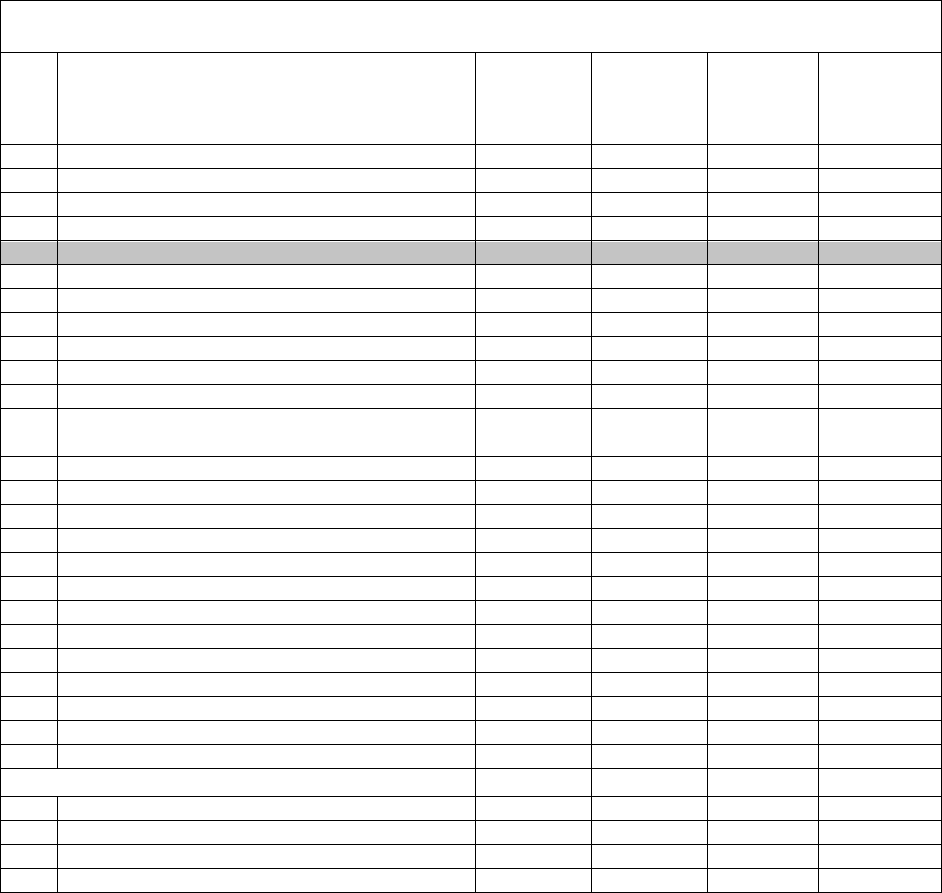
PROGRAM EVALUATION AND INFORMATION RESOURCES
MSHA - 69
BUDGET ACTIVITY BY OBJECT CLASS
(Dollars in Thousands)
FY 2018
Enacted
FY 2019
Enacted
FY 2020
Request
Diff. FY20
Request /
FY19
Enacted
11.1
Full-time permanent
5,305
5,303
5,303
0
11.3
Other than full-time permanent
3
0
20
20
11.5
Other personnel compensation
93
88
88
0
11.8
Special personal services payments
0
0
0
0
11.9
Total personnel compensation
5,401
5,391
5,411
20
12.1
Civilian personnel benefits
1,831
1,851
1,858
7
13.0
Benefits for former personnel
0
0
0
0
21.0
Travel and transportation of persons
58
64
40
-24
22.0
Transportation of things
0
1
1
0
23.1
Rental payments to GSA
541
502
502
0
23.2
Rental payments to others
3
0
0
0
23.3
Communications, utilities, and miscellaneous
charges
280
540
540
0
24.0
Printing and reproduction
0
2
2
0
25.1
Advisory and assistance services
0
0
0
0
25.2
Other services from non-Federal sources
153
112
112
0
25.3
Other goods and services from Federal sources 1/
942
2,406
4,903
2,497
25.4
Operation and maintenance of facilities
0
0
0
0
25.5
Research and development contracts
0
0
0
0
25.7
Operation and maintenance of equipment
8,929
8,084
8,084
0
26.0
Supplies and materials
50
63
63
0
31.0
Equipment
895
43
43
0
41.0
Grants, subsidies, and contributions
0
0
0
0
42.0
Insurance claims and indemnities
0
24
24
0
Total
19,083
19,083
21,583
2,500
1/Other goods and services from Federal sources
Working Capital Fund
836
2,299
2,296
-3
DHS Services
28
23
23
0
HHS Services
16
16
16
0
Services by Other Government Departments
62
68
68
0
PROGRAM EVALUATION AND INFORMATION RESOURCES
MSHA - 70
CHANGES IN FY 2020
(Dollars in Thousands)
Activity Changes
Built-In
To Provide For:
Costs of pay adjustments
$0
Personnel benefits
0
One day more of pay
27
Federal Employees' Compensation Act (FECA)
0
Benefits for former personnel
0
Travel and transportation of persons
0
Transportation of things
0
Rental payments to GSA
0
Rental payments to others
0
Communications, utilities, and miscellaneous charges
0
Printing and reproduction
0
Advisory and assistance services
0
Other services from non-Federal sources
0
Working Capital Fund
-3
Other Federal sources (DHS Charges)
0
Other goods and services from Federal sources
0
Research & Development Contracts
0
Operation and maintenance of facilities
0
Operation and maintenance of equipment
0
Supplies and materials
0
Equipment
0
Grants, subsidies, and contributions
0
Insurance claims and indemnities
0
Built-Ins Subtotal
$24
Net Program
$2,476
Direct FTE
0
Estimate
FTE
Base
$19,107
52
Program Increase
$2,500
0
Program Decrease
-$24
0
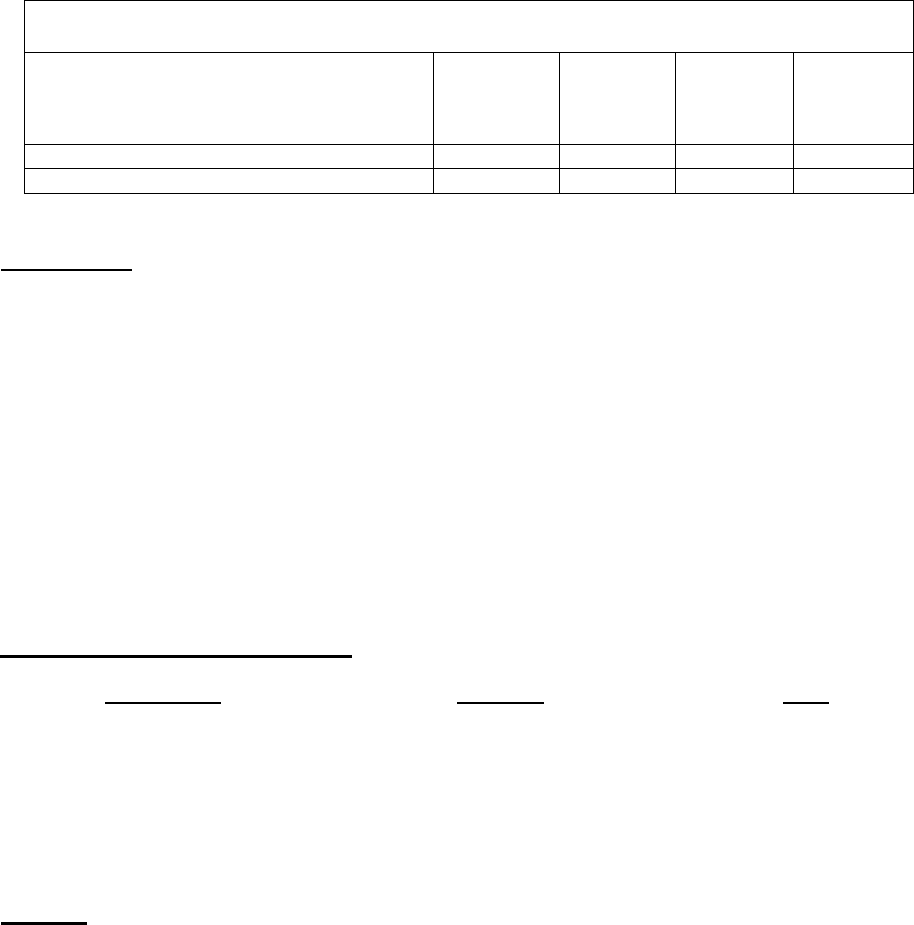
PROGRAM ADMINISTRATION
MSHA - 71
BUDGET AUTHORITY BEFORE THE COMMITTEE
(Dollars in Thousands)
FY 2018
Enacted
FY 2019
Enacted
FY 2020
Request
Diff. FY20
Request /
FY19
Enacted
Activity Appropriation
16,355
16,355
16,355
0
FTE
90
87
87
0
NOTE: FY 2018 reflects actual FTE. Authorized FTE for FY 2018 was 91.
Introduction
Program Administration (PA) provides executive direction as well as administrative and
management advice and services to support all MSHA’s activities to eliminate fatal mining
accidents, reduce the frequency and severity of accidents, and minimize health hazards through
enforcement of mandatory safety and health standards in the mining industry.
PA plans and directs administrative management activities within MSHA. Services include the
full range of human resources, financial, procurement and contracting, facilities, personal
property, fleet, and records management as well as employee safety and health programs for
MSHA. PA supports and strengthens all of MSHA’s program activities by providing leadership,
policy direction, and administrative support services, enabling the agency to meet annual
performance goals and objectives.
Five-Year Budget Activity History
Fiscal Year
Funding
(Dollars in Thousands)
FTE
2015
$15,838
86
2016
$15,838
91
2017
$15,838
95
2018
$16,355
91
2019
$15,838
84
FY 2020
In FY 2020, MSHA requests $16,355,000 and 87 FTE for the PA budget activity. PA will
continue to support DOL’s Priority Goal, as well as the Departmental strategic goals and
objectives, to prevent fatalities, illness, and injury from mining and promote safe and healthful
workplaces for America’s miners.
PA will support the continued efforts of the Agency to merge the enforcement workforce to help
ensure miners’ safety and health. PA will support Departmental activities associated with
Agency reform and consolidation for several administrative functions. PA will continue to
reduce workers’ compensation costs through improved employee health and safety programs,
and proactive management of the workers compensation program.

PROGRAM ADMINISTRATION
MSHA - 72
FY 2019
MSHA’s PA program will continue supporting enhanced enforcement, regulatory, and education
initiatives. PA will continue efforts to reduce workers’ compensation costs through improved
employee health and safety programs. MSHA will use data to perform succession planning,
focus on enhanced outreach to improve hiring in difficult to fill areas, drive employee
engagement, and coordinate employee training and development.
PA will also continue to support MSHA’s acquisition programs including innovative
procurement processes that continue to leverage small and disadvantaged businesses and ensure
best value acquisitions. MSHA will implement continued facility and vehicle fleet management
initiatives that maintain mission support in the most cost effective manner.
PA will continue work to support the President’s initiative to “Reduce the Footprint” by
analyzing space usage throughout the country to determine if other offices can be merged or
closed without negatively affecting our mission or severely impacting the employees.
FY 2018
PA supported MSHA’s mission to improve the safety and health of the nation’s miners by
ensuring the effective delivery of administrative and management activities such as:
• Awarded contracts to enhance communications within the various MSHA locations to
include, Video Teleconference (VTC) and Unified Communications (UC) Equipment,
Support, and Solutions.
• Provided procurement support to secure up-to-date devices, such as laptops and tablets to all
MSHA employees, thus enhancing productivity of operations.
• Managed nearly 1,100,000 square feet leased/owned space and completed 4 construction
projects.
• Ensured the continued safety and health of MSHA mining inspectors through medical
assessment of 1,100 Inspectors.
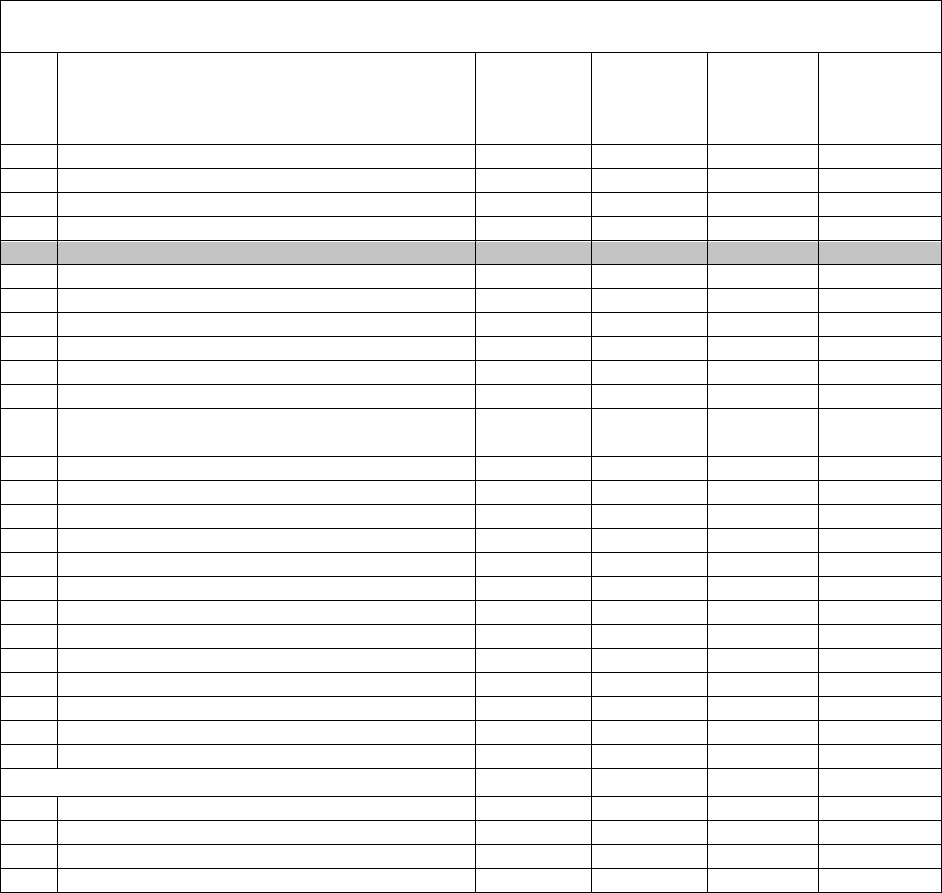
PROGRAM ADMINISTRATION
MSHA - 73
BUDGET ACTIVITY BY OBJECT CLASS
(Dollars in Thousands)
FY 2018
Enacted
FY 2019
Enacted
FY 2020
Request
Diff. FY20
Request /
FY19
Enacted
11.1
Full-time permanent
9,614
9,087
9,087
0
11.3
Other than full-time permanent
0
0
33
33
11.5
Other personnel compensation
183
149
149
0
11.8
Special personal services payments
0
0
0
0
11.9
Total personnel compensation
9,797
9,236
9,269
33
12.1
Civilian personnel benefits
2,884
2,777
2,787
10
13.0
Benefits for former personnel
12
0
0
0
21.0
Travel and transportation of persons
117
85
70
-15
22.0
Transportation of things
14
9
9
0
23.1
Rental payments to GSA
937
870
870
0
23.2
Rental payments to others
3
21
25
4
23.3
Communications, utilities, and miscellaneous
charges
113
73
73
0
24.0
Printing and reproduction
2
3
3
0
25.1
Advisory and assistance services
15
12
12
0
25.2
Other services from non-Federal sources
190
159
132
-27
25.3
Other goods and services from Federal sources 1/
1,601
2,443
2,438
-5
25.4
Operation and maintenance of facilities
0
0
0
0
25.5
Research and development contracts
0
0
0
0
25.7
Operation and maintenance of equipment
460
606
606
0
26.0
Supplies and materials
113
43
43
0
31.0
Equipment
97
8
8
0
41.0
Grants, subsidies, and contributions
0
0
0
0
42.0
Insurance claims and indemnities
0
10
10
0
Total
16,355
16,355
16,355
0
1/Other goods and services from Federal sources
Working Capital Fund
1,462
2,308
2,303
-5
DHS Services
48
40
40
0
HHS Services
55
55
55
0
Services by Other Government Departments
36
40
40
0
PROGRAM ADMINISTRATION
MSHA - 74
CHANGES IN FY 2020
(Dollars in Thousands)
Activity Changes
Built-In
To Provide For:
Costs of pay adjustments
$0
Personnel benefits
0
One day more of pay
44
Federal Employees' Compensation Act (FECA)
-1
Benefits for former personnel
0
Travel and transportation of persons
0
Transportation of things
0
Rental payments to GSA
0
Rental payments to others
4
Communications, utilities, and miscellaneous charges
0
Printing and reproduction
0
Advisory and assistance services
0
Other services from non-Federal sources
0
Working Capital Fund
-5
Other Federal sources (DHS Charges)
0
Other goods and services from Federal sources
0
Research & Development Contracts
0
Operation and maintenance of facilities
0
Operation and maintenance of equipment
0
Supplies and materials
0
Equipment
0
Grants, subsidies, and contributions
0
Insurance claims and indemnities
0
Built-Ins Subtotal
$42
Net Program
-$42
Direct FTE
0
Estimate
FTE
Base
$16,397
87
Program Increase
$0
0
Program Decrease
-$42
0
